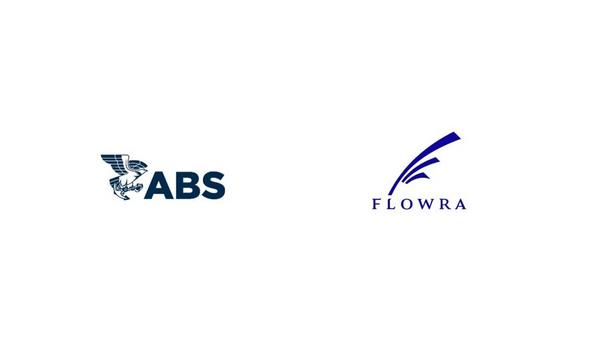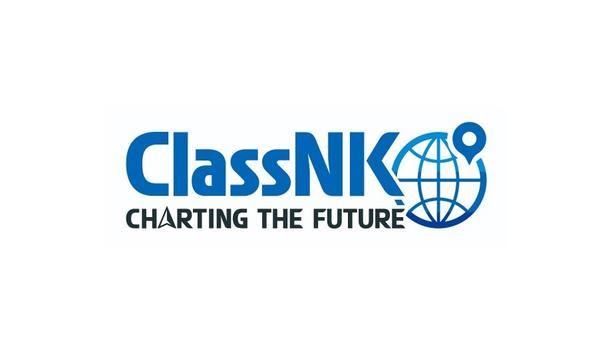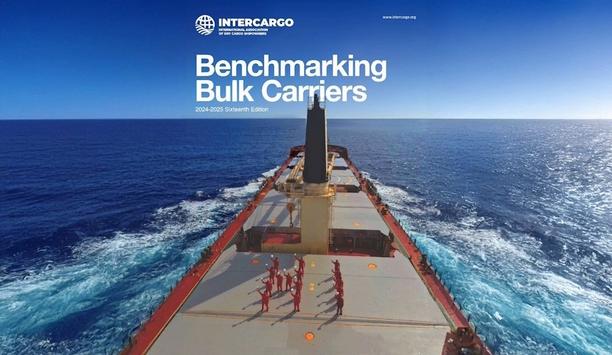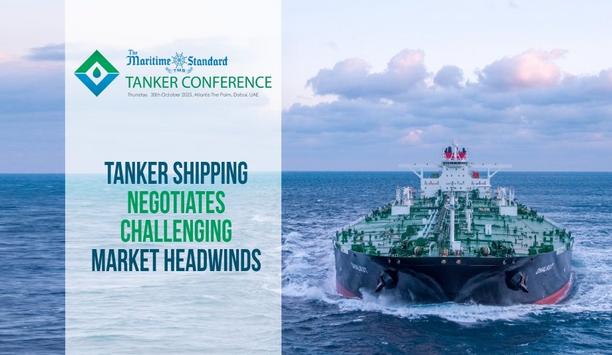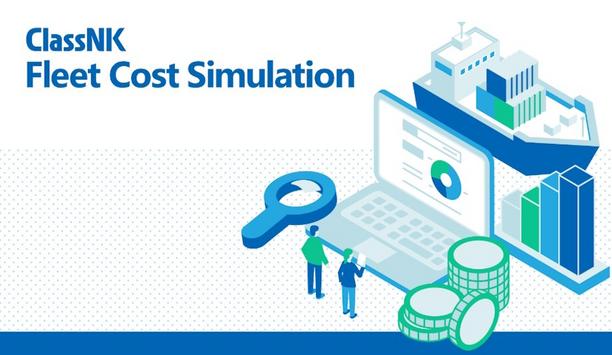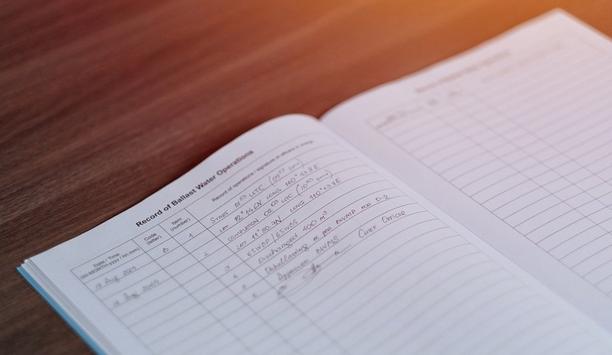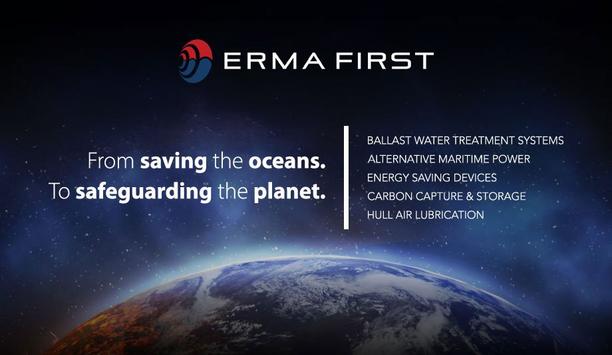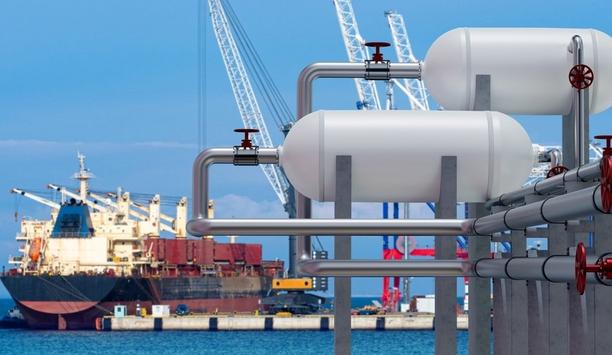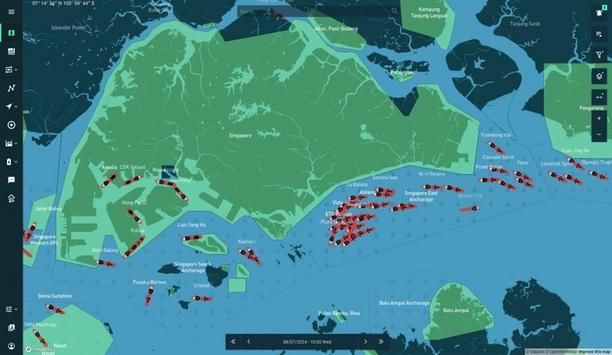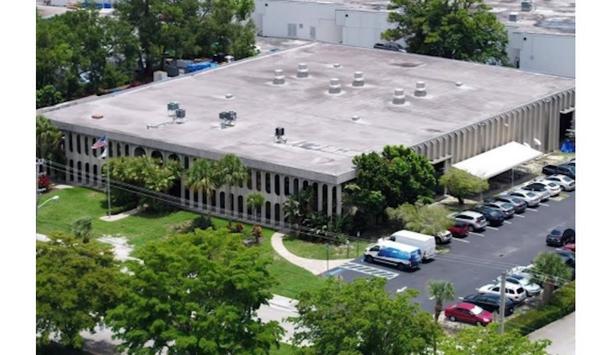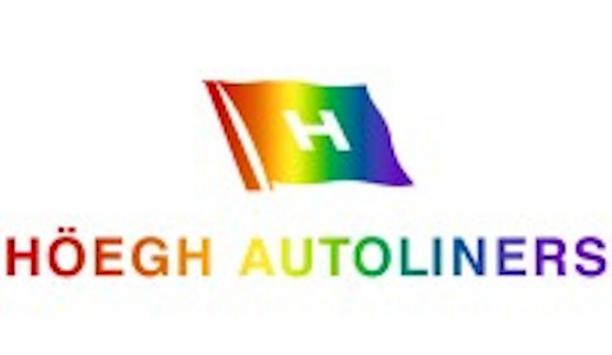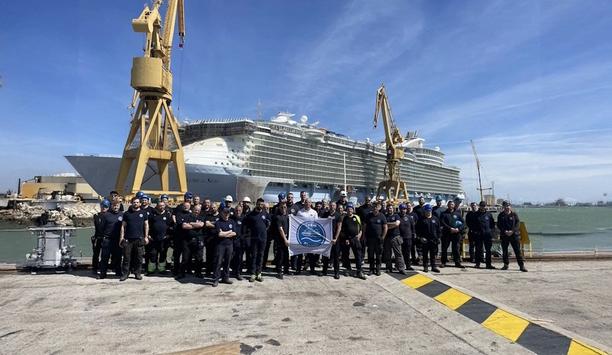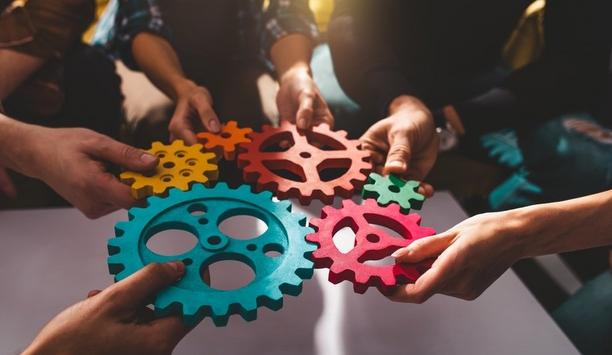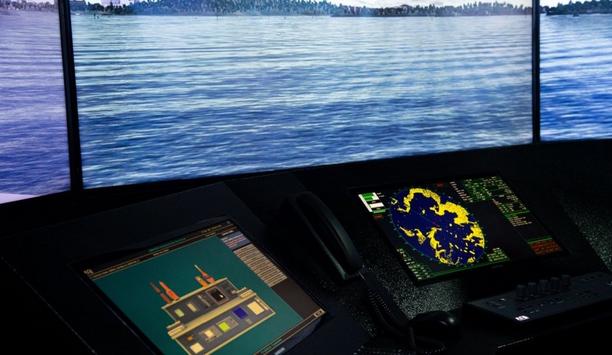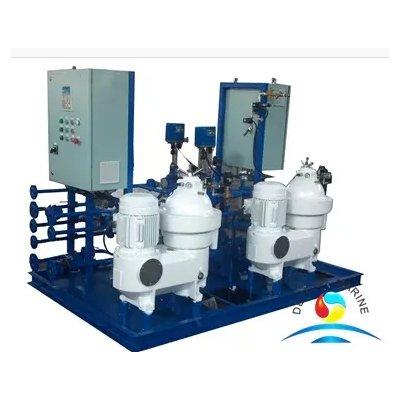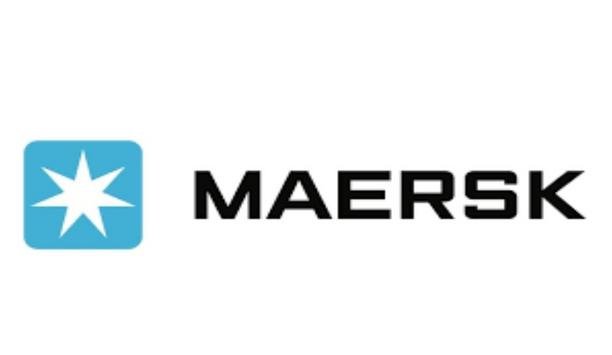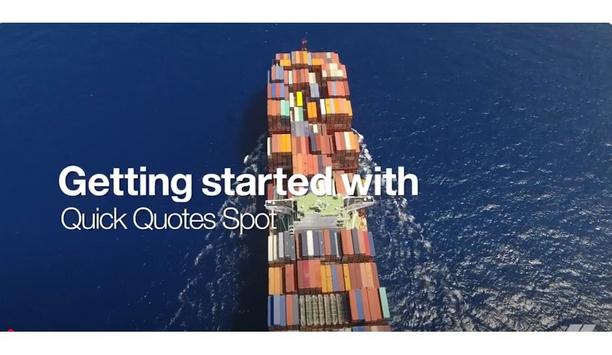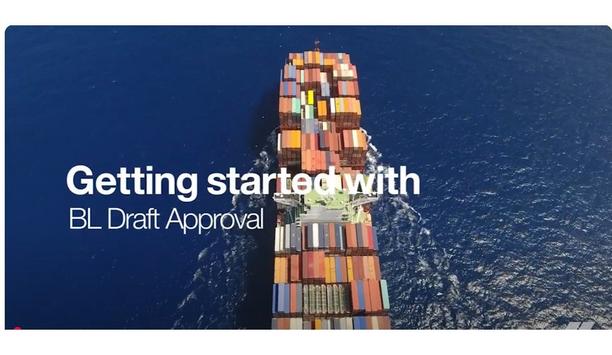Regulations

ClassNK has released 'ClassNK Technical Journal No.11 2025 (Ⅰ)'. This issue features the title 'Latest Technological Trends for Protection of the Marine Environment', providing the particularly well-received presentations on 'Underwater Noise from Ships' and 'Safe Decarbonisation’ from 'ClassNK R&D Forum 2025', which was attended by more than 200 participants. 'ClassNK Technical Journal', has been published to contribute to the advancement of technology and society through the outcome...
Watson Farley & Williams advised ING Bank N.V., Singapore Branch—acting as arranger, lender and facility and security agent — on a term loan facility provided to Tank Container Investment Fund Pte. Ltd. (“TCIF”), a subsidiary of a sub-fund managed by FPG AIM Capital Pte. Ltd. (“FAC”), for the acquisition of stainless-steel tank containers. The facility — FAC’s first fund financing — includes an accordion option for potential upsizing and...
ABS Wavesight, the ABS-affiliated software-as-a-service (SaaS) company, has been chosen by Navios Maritime Partners L.P. to provide a single integrated platform to support compliance with the FuelEU Maritime Regulation and EU Emissions Trading Scheme (ETS) requirements. As of January 1, 2025, companies with ships calling on EU ports must collect and report key fuel-related data in preparation for EU submission deadlines. The ABS Wavesight platform offers a seamless experience that automate...
Watson Farley & Williams (WFW) advised shipping company - MPC Container Ships ASA (MPCC) on two transactions, as part of the implementation of its fleet strategy. The first transaction was the order of four new 4,500 TEU container vessels from Chinese shipyard Taizhou Sanfu Ship Engineering for a total investment of US$228 million. The ships are scheduled for completion and delivery to MPCC in the second half of 2027. Decarbonisation of maritime transport MPC has already signed three-year...
OrbitMI is pleased to announce that it has agreed to acquire Quebec-based AuQub, an artificial intelligence (AI) firm whose suite of AI-driven agents optimises workflows and automates repetitive tasks, helping businesses enhance productivity through more efficient decision-making. By incorporating AuQub’s innovative and accessible SaaS solutions into its platform, OrbitMI continues to advance the adoption of intelligent, connected workflows to help its maritime customers operate profitab...
Marine Masters has successfully completed its offshore scope for the decommissioning of the South Angsi Alpha (SAA) platform, operated by Hibiscus Oil & Gas Malaysia Limited. The campaign marks a major milestone in the repurposing of retired offshore infrastructure, with the platform’s substructure now resting on the seabed as part of Malaysia’s largest rig-to-reef project. Safe removal and partial reefing Topside and substructure were designed for safe removal and reefing in...
News
ABS and the Floating Offshore Wind Power Technology Research Association (FLOWRA) of Japan signed a memorandum of understanding to collaborate and explore new technologies to support the floating offshore wind industry. “For over 160 years, ABS has been leading the charge for safety excellence in the marine and offshore industries. Joining FLOWRA represents a great opportunity for us to work closely with industry leaders who are shaping what safety means for floating offshore wind developments,” said Rob Langford, ABS Vice President, Global Offshore Renewables. “By leveraging ABS’ deep domain experience in offshore energy and leaning into our shared interests in the development of practical standards and requirements, ABS and FLOWRA aim to support a safer future for the global floating wind industry.” Floating offshore wind FLOWRA is a technical research association that works with overseas organisations FLOWRA is a technical research association that works with overseas organisations to research and develop common basic technologies for floating offshore wind to reduce costs and risks. Masakatsu Terasaki, Chairperson of FLOWRA BoD, said: “We are delighted to be collaborating with ABS, one of the world's active classification societies and a leading certification body in the floating offshore wind segment. This partnership is of great significance to FLOWRA's efforts.” “By combining ABS's exceptional technical expertise and risk management capabilities with FLOWRA's initiatives, we anticipate advancing the optimisation of floating offshore wind power systems and establishing a robust technical foundation, while reducing development risks and costs.” ABS is a trusted partner for offshore renewable energy stakeholders, delivering advisory and technical review solutions that help minimise risk and enhance safety.
ClassNK has released ‘FAQs on the FuelEU Maritime (4th Edition)’. It can serve as a helpful guide for stakeholders in the shipping sector when considering measures to comply with environmental regulations. FuelEU Maritime, an EU regulation aimed at promoting the decarbonisation of fuels used on board ships, has entered into force and applies to all ships above 5,000 gross tonnage calling at EU ports from January 1, 2025. Latest clarifications from EMSA’s webinar In this ‘FAQs on the FuelEU Maritime (4th Edition)’, ClassNK has updated several sections reflecting the latest clarifications from EMSA’s webinar and the Guidance Document, including the following points: Conditions for cumulative penalty increases in cases of repeated penalties Priority order of fuels in GHG intensity calculation (By accounting for fuels in the order of increasing GHG intensity, it is possible to maximise the benefit of using low-GHG-intensity fuels.) Stakeholders in the shipping sector ClassNK will continue to strive to support stakeholders in the shipping sector through such guidance provision as part of the "ClassNK Transition Support Services." ‘FAQs on the FuelEU Maritime (4th Edition)’ is available on the following page of the ClassNK website.
Dry bulk carriers entered with INTERCARGO continue to demonstrate stronger performance than the global fleet average on safety and compliance, according to the Association’s latest Benchmarking Report. The report highlights meaningful differences across the sector, with significant variations in inspection outcomes, operational risk and regulatory performance. Incidence of regulatory deficiencies INTERCARGO-member ships consistently show a lower incidence of regulatory deficiencies and detentions compared with the global fleet. “These results show that quality is measurable,” said John Xylas, Chairman of INTERCARGO. “Responsible, quality operators are delivering safer, more compliant ships, and benchmarking helps identify strengths, highlights areas for improvement and promotes operational integrity throughout the industry.” Ship operations and management Some parts of the global fleet remain consistently linked to higher levels of risk exposure The report also identifies continued disparities in class and flag performance. Some parts of the global fleet remain consistently linked to higher levels of risk exposure and weaker inspection outcomes. These trends reinforce the importance of transparency, strong oversight, and data-informed decision-making in ship operations and management. Benchmarking Report INTERCARGO also notes regional shifts in enforcement activity, with some Port State Control regimes taking a more active approach to inspections and detentions. These developments underline the importance of consistent and equitable Port State Control. The Benchmarking Report draws on a range of public and commercial data sources. By identifying trends and supporting greater transparency, the Association seeks to strengthen safety, compliance and performance across the global dry bulk sector.
KR (Korean Register) is pleased to announce that Lee Jungkun, General Manager of KR’s Convention & Legislation Service Team, has been elected as the next Chair of the International Association of Classification Societies (IACS) Safety Panel, with a three-year term running from January 1, 2026, through December 31, 2028. The appointment was confirmed at the 91st IACS Council Meeting held in Beijing, China. IACS’s seven technical panels The Safety Panel is one of IACS’s 7 technical panels and plays a crucial role in developing and revising The Safety Panel is one of IACS’s seven technical panels and plays a crucial role in developing, revising, and interpreting key international maritime safety regulations. Working closely with major regulatory bodies such as the International Maritime Organization (IMO) and the European Union (EU), the panel addresses critical safety issues under IMO conventions. Prior roles of Lee Lee graduated from Korea Maritime & Ocean University and joined KR in 2000. He has represented KR on the Safety Panel since 2016, contributing to the panel’s work for nearly a decade. Recognised as an expert in maritime safety, he possesses extensive knowledge and practical experience with major safety instruments, including the International Convention for the Safety of Life at Sea (SOLAS), and has actively participated in technical discussions at both IACS and IMO. His election as Chair, with strong support from the twelve IACS member societies, underscores the high regard for his expertise and leadership within the international maritime community.
The 10th annual Maritime Standard Tanker Conference 2025 will be held on Thursday, 30th October at the iconic Atlantis, The Palm, Dubai. Aimed at key decision makers and opinion formers within the tanker shipping business, the event takes place at an uncertain time for the industry, given economic volatility and a host of geopolitical issues. Tough environmental regulations There is also growing pressure to comply with tough environmental regulations There is also growing pressure to comply with tough environmental regulations, presenting a series of technical and commercial hurdles. While there is long term optimism about the future of the industry, there are certainly short term challenges, and how best to navigate through these will be the core, overarching theme of this year’s conference. Tanker shipping negotiates challenging market headwinds. Session 2 in the afternoon will have the theme of “Boosting operational efficiency while maintaining a focus on green shipping.” This session will focus on the key issues facing tanker shipowners and operators in terms of day-to-day operations, and the solutions available to them. Environmental regulatory changes This will look at how best to accommodate environmental regulatory changes, embrace technology advances in areas such as digitalisation and AI to best effect, and also to address growing seafarer and vessel safety concerns. This session will hear from a range of speakers from various sectors, including ship repair, maritime insurance, law, bunker supply, ship management, security, information technology, as well as tanker owners and operators. Topics proposed for inclusion include: Embracing new generation tanker designs Retrofitting for a green, profitable future Harnessing the power of AI to strengthen commercial and operational resilience Safety at sea - tackling the renewed threat of piracy, cyber security and other safety challenges facing the industry Carbon capture as a viable future option for tanker shipping Developing solid financial foundation to support future growth. Speakers will also examine the importance of creating alternative fuel supply networks and debate which fuel is the best option for dual fuel operations in different market segments.
ClassNK launches a new service, ‘ClassNK Fleet Cost Simulation’, as part of its ‘ClassNK Transition Support Services’, which aims to facilitate the maritime industry’s transition to decarbonised fuels. This new service estimates the cost impact of GHG emission reduction regulations, including IMO's mid-term measures, EU-ETS, and FuelEU Maritime on behalf of clients. This service provides the ‘ClassNK Fleet Cost Calculator’, a calculation tool that simulates future cost fluctuations due to fuel conversion, along with a ‘Cost Estimation Report’ that summarises the total cost outlook for the entire fleet through graphs and tables. ClassNK Fleet Cost Simulation This service significantly reduces workload for cost estimation and documentation, enabling clients to obtain reliable cost data for use in business planning The ‘ClassNK Fleet Cost Simulation’ service includes the following two offerings: ClassNK Fleet Cost Calculator (Excel format) Covers three major environmental regulations: IMO GHG Fuel Intensity (GFI), EU-ETS, and FuelEU Maritime. Allows flexible customisation of assumptions, including not only ship prices and fuel prices but also vessel replacement timing, fuel efficiency improvement rates, GHG emission factors, etc. Cost Estimation Report (PowerPoint format) Provides a report summarising cost projections up to 2050 in graphs and tables, based on actual fuel consumption data. Comprehensively reflects cost factors that affect business, including shipbuilding, fuel, and regulatory compliance. Delivered in PowerPoint format, ready for direct use in internal presentations and reporting for management. Upon request, ClassNK offers an advanced version of the report, which simulates and analyses the timing and effects of fuel conversion for cost optimisation.
ABS and the Floating Offshore Wind Power Technology Research Association (FLOWRA) of Japan signed a memorandum of understanding to collaborate and explore new technologies to support the floating offshore wind industry. “For over 160 years, ABS has been leading the charge for safety excellence in the marine and offshore industries. Joining FLOWRA represents a great opportunity for us to work closely with industry leaders who are shaping what safety means for floating offshore wind developments,” said Rob Langford, ABS Vice President, Global Offshore Renewables. “By leveraging ABS’ deep domain experience in offshore energy and leaning into our shared interests in the development of practical standards and requirements, ABS and FLOWRA aim to support a safer future for the global floating wind industry.” Floating offshore wind FLOWRA is a technical research association that works with overseas organisations FLOWRA is a technical research association that works with overseas organisations to research and develop common basic technologies for floating offshore wind to reduce costs and risks. Masakatsu Terasaki, Chairperson of FLOWRA BoD, said: “We are delighted to be collaborating with ABS, one of the world's active classification societies and a leading certification body in the floating offshore wind segment. This partnership is of great significance to FLOWRA's efforts.” “By combining ABS's exceptional technical expertise and risk management capabilities with FLOWRA's initiatives, we anticipate advancing the optimisation of floating offshore wind power systems and establishing a robust technical foundation, while reducing development risks and costs.” ABS is a trusted partner for offshore renewable energy stakeholders, delivering advisory and technical review solutions that help minimise risk and enhance safety.
ClassNK has released ‘FAQs on the FuelEU Maritime (4th Edition)’. It can serve as a helpful guide for stakeholders in the shipping sector when considering measures to comply with environmental regulations. FuelEU Maritime, an EU regulation aimed at promoting the decarbonisation of fuels used on board ships, has entered into force and applies to all ships above 5,000 gross tonnage calling at EU ports from January 1, 2025. Latest clarifications from EMSA’s webinar In this ‘FAQs on the FuelEU Maritime (4th Edition)’, ClassNK has updated several sections reflecting the latest clarifications from EMSA’s webinar and the Guidance Document, including the following points: Conditions for cumulative penalty increases in cases of repeated penalties Priority order of fuels in GHG intensity calculation (By accounting for fuels in the order of increasing GHG intensity, it is possible to maximise the benefit of using low-GHG-intensity fuels.) Stakeholders in the shipping sector ClassNK will continue to strive to support stakeholders in the shipping sector through such guidance provision as part of the "ClassNK Transition Support Services." ‘FAQs on the FuelEU Maritime (4th Edition)’ is available on the following page of the ClassNK website.
Dry bulk carriers entered with INTERCARGO continue to demonstrate stronger performance than the global fleet average on safety and compliance, according to the Association’s latest Benchmarking Report. The report highlights meaningful differences across the sector, with significant variations in inspection outcomes, operational risk and regulatory performance. Incidence of regulatory deficiencies INTERCARGO-member ships consistently show a lower incidence of regulatory deficiencies and detentions compared with the global fleet. “These results show that quality is measurable,” said John Xylas, Chairman of INTERCARGO. “Responsible, quality operators are delivering safer, more compliant ships, and benchmarking helps identify strengths, highlights areas for improvement and promotes operational integrity throughout the industry.” Ship operations and management Some parts of the global fleet remain consistently linked to higher levels of risk exposure The report also identifies continued disparities in class and flag performance. Some parts of the global fleet remain consistently linked to higher levels of risk exposure and weaker inspection outcomes. These trends reinforce the importance of transparency, strong oversight, and data-informed decision-making in ship operations and management. Benchmarking Report INTERCARGO also notes regional shifts in enforcement activity, with some Port State Control regimes taking a more active approach to inspections and detentions. These developments underline the importance of consistent and equitable Port State Control. The Benchmarking Report draws on a range of public and commercial data sources. By identifying trends and supporting greater transparency, the Association seeks to strengthen safety, compliance and performance across the global dry bulk sector.
KR (Korean Register) is pleased to announce that Lee Jungkun, General Manager of KR’s Convention & Legislation Service Team, has been elected as the next Chair of the International Association of Classification Societies (IACS) Safety Panel, with a three-year term running from January 1, 2026, through December 31, 2028. The appointment was confirmed at the 91st IACS Council Meeting held in Beijing, China. IACS’s seven technical panels The Safety Panel is one of IACS’s 7 technical panels and plays a crucial role in developing and revising The Safety Panel is one of IACS’s seven technical panels and plays a crucial role in developing, revising, and interpreting key international maritime safety regulations. Working closely with major regulatory bodies such as the International Maritime Organization (IMO) and the European Union (EU), the panel addresses critical safety issues under IMO conventions. Prior roles of Lee Lee graduated from Korea Maritime & Ocean University and joined KR in 2000. He has represented KR on the Safety Panel since 2016, contributing to the panel’s work for nearly a decade. Recognised as an expert in maritime safety, he possesses extensive knowledge and practical experience with major safety instruments, including the International Convention for the Safety of Life at Sea (SOLAS), and has actively participated in technical discussions at both IACS and IMO. His election as Chair, with strong support from the twelve IACS member societies, underscores the high regard for his expertise and leadership within the international maritime community.
The 10th annual Maritime Standard Tanker Conference 2025 will be held on Thursday, 30th October at the iconic Atlantis, The Palm, Dubai. Aimed at key decision makers and opinion formers within the tanker shipping business, the event takes place at an uncertain time for the industry, given economic volatility and a host of geopolitical issues. Tough environmental regulations There is also growing pressure to comply with tough environmental regulations There is also growing pressure to comply with tough environmental regulations, presenting a series of technical and commercial hurdles. While there is long term optimism about the future of the industry, there are certainly short term challenges, and how best to navigate through these will be the core, overarching theme of this year’s conference. Tanker shipping negotiates challenging market headwinds. Session 2 in the afternoon will have the theme of “Boosting operational efficiency while maintaining a focus on green shipping.” This session will focus on the key issues facing tanker shipowners and operators in terms of day-to-day operations, and the solutions available to them. Environmental regulatory changes This will look at how best to accommodate environmental regulatory changes, embrace technology advances in areas such as digitalisation and AI to best effect, and also to address growing seafarer and vessel safety concerns. This session will hear from a range of speakers from various sectors, including ship repair, maritime insurance, law, bunker supply, ship management, security, information technology, as well as tanker owners and operators. Topics proposed for inclusion include: Embracing new generation tanker designs Retrofitting for a green, profitable future Harnessing the power of AI to strengthen commercial and operational resilience Safety at sea - tackling the renewed threat of piracy, cyber security and other safety challenges facing the industry Carbon capture as a viable future option for tanker shipping Developing solid financial foundation to support future growth. Speakers will also examine the importance of creating alternative fuel supply networks and debate which fuel is the best option for dual fuel operations in different market segments.
ClassNK launches a new service, ‘ClassNK Fleet Cost Simulation’, as part of its ‘ClassNK Transition Support Services’, which aims to facilitate the maritime industry’s transition to decarbonised fuels. This new service estimates the cost impact of GHG emission reduction regulations, including IMO's mid-term measures, EU-ETS, and FuelEU Maritime on behalf of clients. This service provides the ‘ClassNK Fleet Cost Calculator’, a calculation tool that simulates future cost fluctuations due to fuel conversion, along with a ‘Cost Estimation Report’ that summarises the total cost outlook for the entire fleet through graphs and tables. ClassNK Fleet Cost Simulation This service significantly reduces workload for cost estimation and documentation, enabling clients to obtain reliable cost data for use in business planning The ‘ClassNK Fleet Cost Simulation’ service includes the following two offerings: ClassNK Fleet Cost Calculator (Excel format) Covers three major environmental regulations: IMO GHG Fuel Intensity (GFI), EU-ETS, and FuelEU Maritime. Allows flexible customisation of assumptions, including not only ship prices and fuel prices but also vessel replacement timing, fuel efficiency improvement rates, GHG emission factors, etc. Cost Estimation Report (PowerPoint format) Provides a report summarising cost projections up to 2050 in graphs and tables, based on actual fuel consumption data. Comprehensively reflects cost factors that affect business, including shipbuilding, fuel, and regulatory compliance. Delivered in PowerPoint format, ready for direct use in internal presentations and reporting for management. Upon request, ClassNK offers an advanced version of the report, which simulates and analyses the timing and effects of fuel conversion for cost optimisation.


Expert commentary
Marine industry pioneers gathered at Nor-Shipping in June, with a focus on the key challenges and opportunities driving the transition to a lower-carbon future. With regulations such as the Carbon Intensity Indicator (CII), FuelEU Maritime, the EU Emissions Trading System (EU ETS) and the upcoming International Maritime Organisation (IMO) carbon levy, fouling control systems continue to play a vital role in the shipping industry as the regulatory bodies chart a course towards net-zero emissions by 2050. Fouling control systems Vessel operators will have to navigate a new challenge on the horizon after a global deal agreement These fouling control systems help reduce fuel consumption and CO₂ emissions, enabling vessels to maintain favourable efficiency ratings and avoid penalties. Vessel operators will have to navigate a new challenge on the horizon after a global deal agreement was passed at the UN's IMO MEPC 83 meeting in April, following almost a decade of negotiations. Carbon-intensive fuels From 2028, owners of large vessels will have to reduce their carbon-intensive fuels or face fines of up to $380 per tonne of carbon dioxide emissions from burning fuel. Shipping has become the first industry in the world with internationally mandated targets to reduce emissions and according to maritime consultancy UMAS, the historic agreement could result in an eight percent reduction in emissions by 2030. Fouling control coatings Vessel operators need to consult coating companies with proven expertise in fouling control coatings The deal is a historic moment for the industry and will further drive home the importance of cutting fuel consumption. Marine coatings and technologies, in isolation, are not enough for shipowners to comply with the regulations. Vessel operators need to consult coating companies with proven expertise in high-performing fouling control coatings and a strong track record of in-service performance, to support data-driven and well-informed investment decisions. Underwater hull schemes We’ve supported customers with their CII ratings and have helped them offset the EU ETS surcharge, which came into effect last year. In 2024, shipowners were responsible for 40% of their emissions costs, increasing to 70% this year and set to reach 100% from 2026. Last year, a record number of customers engaged with us to identify the most suitable underwater hull schemes to aid CII compliance, highlighting the growing demand for tailored fouling control solutions from International® marine coatings. Our solutions not only ensure regulatory compliance but also enhance vessel performance and sustainability. Vessel fuel consumption and CO2 emissions Application of Intercept® 8500 LPP on a trading VLCC vessel led to a removal of carbon emissions For example, the application of Intercept® 8500 LPP on a globally trading VLCC vessel led to a reduction of carbon emissions of approximately 8,500 tonnes over the five years in service. As a result, this vessel maintained a CII ‘A’ grade rating throughout the study, which resulted in the customer achieving both performance and decarbonisation targets. Furthermore, we have seen increased demand for Intertrac® Vision, our big data prediction tool that enables ship owners and operators to assess the impact of fouling control coatings on vessel fuel consumption and CO2 emissions while in transit. This digital tool allows our experts to collaborate closely with vessel operators to assess the return on investment of various coating schemes, tailored to vessel type and operating conditions. It simplifies the coatings selection process and delivers data-driven insights for more informed decision-making. Hull performance expertise and data-driven insights The carbon levy passed at the IMO meeting in April is scheduled for implementation in 2028. With steeper penalties, it is expected to impact global shipping routes if vessel operators do not reduce their reliance on carbon-intensive fuels. However, there are steps that shipowners can take to invest in regulation compliances and minimise penalties. With nearly 150 years of experience serving the marine industry, offering high-performance coatings, hull performance expertise and data-driven insights, we are uniquely positioned to help shipowners achieve regulatory compliance while maintaining operational efficiency.
The global maritime surveillance market is projected to grow from $21.9 billion in 2023 to $ 42.7 billion by 2033. This growth is being driven by increasing global trade, maritime security concerns, and the adoption of advanced surveillance technologies such as radars, drones, and satellite monitoring systems. Moreover, the global shipping industry is now on the frontlines of a new kind of conflict — one defined by economic coercion, shadow fleets, and contested logistics – a durable competition where adversaries seek control and influence over global supply chains. As tariff regimes expand and national security policies increasingly target commercial vessels, maritime operators are being forced to navigate a risk environment shaped more by geopolitics than wind and weather. Infrastructure of global trade Trade disruptions are no longer accidental by products of diplomacy — they are deliberate policy levers. Tariff escalation between the U.S. and China, sanctions on Russian oil, and Houthi attacks in the Red Sea are not isolated threats; they signal a new normal in which governments treat the shipping industry as a tactical asset. From China's military-civil fusion shipbuilding policies to LOGINK, its state-run maritime surveillance network, the very infrastructure of global trade is becoming entangled in nation-state agendas. Contested logistics: Struggle for global economic stability The current maritime threat landscape involving contested logistics contains strategic positioning The current maritime threat landscape involving contested logistics encompasses strategic positioning across critical chokepoints and infrastructure. The statistics are sobering: major shipping companies reported traffic through the Suez Canal dropped by 66% as of September 2024 due to Houthi attacks, with J.P. Morgan estimating shipping costs have surged significantly, particularly from Asia to Europe, nearly five-fold. Regional maritime security issues These developments illustrate how foundational industries, such as shipbuilding, semiconductors, and rare earth minerals, have become battlegrounds in a broader geopolitical struggle where a cascade of effects have the potential to destroy economies. For example, a military blockade of Taiwan — where Taiwan Semiconductor Manufacturing Corporation operates — would impact every company dependent on advanced semiconductors. This interconnectedness means that what may, on the surface, appear to be regional maritime security issues, can be much more — the potential for global economic disruption across multiple industries. Monitoring of Arctic fleet movements Shadow fleets operated by sanctioned states rely on tactics such as false flagging, frequent ownership changes New threat vectors are coming into focus as the seas expand. As the polar ice caps melt, new Arctic shipping lanes are opening, with a large portion of traffic driven by Russian vessels. These routes present unique surveillance challenges due to their remote nature and the limited presence of traditional maritime enforcement bodies. Monitoring of Arctic fleet movements and infrastructure developments is essential for maintaining security in this emerging corridor. Concerns about dual-use capabilities and strategic readiness Shadow fleets, illicit networks, and military-grade commercial vessels represent real risks, posing challenges in the areas of regulatory compliance, insurance viability, and operational safety. Shadow fleets operated by sanctioned states rely on tactics such as false flagging, frequent ownership changes, and manipulations of the Automatic Identification System (AIS). By turning off transponders, spoofing locations, or falsifying data, these vessels can effectively vanish from traditional tracking systems. This disappearance makes ships harder for authorities to trace and easier for adversaries to exploit for sanctions evasions and/or covert logistics. China's commercial fleets increasingly mirror military standards, raising concerns about dual-use capabilities and strategic readiness under the guise of trade. The need for a new risk framework To navigate this new threat landscape on the high seas, organisations must adopt a new kind of visibility For logistics and shipping pioneers, these implications are profound. This is no longer about simply avoiding sanctioned cargo — it's about forecasting how governments will act and how quickly those actions can alter operations. Vessels may be commandeered, sanctioned, or rerouted without warning. Insurance may evaporate. Contracts may become liabilities. To navigate this new threat landscape on the high seas, organisations must adopt a new kind of visibility — one that models the cascading effects of tariffs, military requisition policies, and enforcement shifts. This is where Open-Source Intelligence (OSINT) becomes indispensable. Real-time context on geopolitical risks OSINT draws from publicly available data -- including satellite imagery, port registries, and social media — to provide real-time context on geopolitical risks. It can be used to track vessel flagging and ownership changes, monitor transshipment hubs, and surface anomalies in crew rosters and employment histories — indicators often tied to sanctions evasion or illicit activity. AIS anomaly detection reveals when ships "go dark." Satellite imagery exposes vessels operating without transponders. Tracking shifts in vessels' flagging or changes in crew manifests can signal risk before it hits operations. Early indicators of disruption OSINT supports risk modelling by revealing trends like flag-of-convenience usage, secondary insurance For insurers and regulators, OSINT supports risk modelling by revealing trends such as flag-of-convenience usage, secondary insurance underwriting in high-risk zones, and affiliations with known bad actors. OSINT doesn't just enhance compliance — it enables foresight, empowering industry players to anticipate when and where governments will act. Now, tariff announcements, sanction designations, and strategic military exercises are not isolated datapoints — they're potentially early indicators of disruption. Maritime situational awareness is a business imperative The age of separating business risk from political risk is over. Global shipping is now a domain of contested logistics where the rules can change as fast as a sanctions update or new enforcement directive. Companies that integrate OSINT into their operational planning gain the ability to model and mitigate threats proactively. Those that don't may find themselves caught in the wake of potential financial, operational, and reputational harm. The shipping industry needs access to the same kind of threat modelling governments use to act. In an era of growing complexity, the role of OSINT in securing global shipping networks cannot be overstated.
When the Ballast Water Management (BWM) Convention came into force in 2004, it was in response to a crisis we couldn’t afford to ignore—one where invasive aquatic species, carried silently in ships’ ballast tanks, were devastating marine ecosystems. Now, two decades later, compliance with this environmental safeguard is no longer optional—and yet, as recent industry findings reveal, record-keeping failures account for 58% of compliance issues. That’s not a technology problem. That’s a documentation problem —one rooted deeply in data management practices and crew training, where small oversights lead to documentation issues, that may cascade into costly compliance failures. And that’s precisely where digital systems excel, guiding crews clearly to avoid mistakes in the first place. New ballast regulations At the IMO’s 82nd Marine Environment Protection Committee (MEPC 82), new ballast water record-keeping regulations were approved, coming into effect from 1 February 2025. These updates mark a significant tightening of documentation standards—and they could catch unprepared shipowners off guard if not acted on promptly. Why ballast water record-keeping is back in the spotlight These new updates aim to change that—and they’re stricter, smarter, and more detailed than before While MEPC 82 made headlines for advancing decarbonisation policies and ECAs in the Arctic and Norwegian Sea, it also honed in on ballast water—a topic that has quietly regained importance. The committee approved critical updates to how ballast water operations and ballast water management system (BWMS) maintenance are recorded. The goal: Enhance transparency, reduce ambiguity, and reinforce environmental protection by making records more structured, traceable, and actionable. This renewed focus is both a warning and an opportunity. In recent years, too many Port State Control detentions and inspection delays have stemmed not from hardware failures, but from poorly maintained or unclear ballast water records. These new updates aim to change that—and they’re stricter, smarter, and more detailed than before. What’s changing: Bypass scenarios and maintenance logging The revised guidelines introduce two new scenarios for vessels dealing with challenging water quality (CWQ) in ports: Scenario 3: A reactive bypass of the BWMS due to unforeseen poor water quality. Scenario 4: A pre-emptive bypass based on anticipated CWQ conditions. These additions are essential for vessels operating globally, particularly those above 400GT. They ensure that alternative operations—like ballast water exchange plus treatment (BWE + BWT)—are clearly documented. Without accurate records, even legitimate actions can fall short of compliance. Ballast Water Management Plan and OEM manuals MEPC 82 also mandates that BWMS care procedures must now be recorded directly in BWRB MEPC 82 also mandates that BWMS maintenance procedures must now be recorded directly in the Ballast Water Record Book (BWRB), in line with the ship’s Ballast Water Management Plan and Original Equipment Manufacturer (OEM) manuals. Responsible crew members must sign off on these records, ensuring traceability and crew accountability. This step isn’t just regulatory housekeeping—it aligns ballast water maintenance with how other onboard systems are already tracked, from engines to emissions. It’s a logical, overdue move toward consistency across compliance. Paper or digital: The format dilemma While the BWRB can still be maintained on paper or electronically, the burden of new structured data fields and stricter reporting timelines will be felt most by those still tied to manual systems. Each additional layer of documentation increases the chance of human error—and with nearly 6 in 10 compliance failures already stemming from admin issues, that’s a risk many operators can’t afford. This is where digital solutions can offer real relief. At NAPA, we’ve already implemented the latest IMO guidelines into our electronic logbook, so crews can comply with MEPC.369(80) requirements out of the box. With ready-made entry templates and smart input validation, data entry is quick, accurate, and audit-ready. NAPA implemented the latest IMO guidelines into an electronic logbook. Better still, once updated, operators can apply for the BWM Convention Electronic Record Book Declaration from their flag—ensuring that compliance is recognised internationally under MEPC.372(80). Less admin, more assurance Electronic logbooks don’t just streamline compliance—they enable better decision-making. When connected to onboard systems, they automatically pull operational data into the BWRB, reducing manual work and error margins. This frees up the crew to focus on operations and safety, rather than paperwork. From a management perspective, real-time visibility into ballast operations and maintenance records helps shore teams stay ahead of inspections and identify potential compliance gaps early. One logbook, many regulations While ballast water is the focus today, it’s not the only regulation demanding attention While ballast water is the focus today, it’s not the only regulation demanding attention. At NAPA, we’ve designed our logbook to support a wide range of evolving compliance frameworks—including MARPOL, EU-ETS, EU-MRV, CII, and the Garbage Record Book. This unified approach removes silos, reduces duplicated effort, and gives operators a more holistic view of vessel performance and compliance. A smarter way forward With decarbonisation and environmental regulations shifting at breakneck pace, even the most experienced crews and fleet managers can struggle to stay up to date. That’s where technology has a crucial role to play—not to replace expertise, but to support it. At NAPA, we work closely with shipowners and operators to configure regulatory record book templates according to their fleet workflows and each vessel’s specific operational profile. This ensures accuracy, ease of use, and most importantly, continuous compliance—even as the rules keep changing. Because in today’s compliance landscape, staying ahead isn’t just about meeting the minimum. It’s about building systems that help you adapt, respond, and thrive. And that starts with getting the record-keeping and data management right.
Harbour insights
Electrification plays an important role in addressing the environmental challenges facing the maritime sector, and electric propulsion is the key component in this transition. Energy-efficient propulsion, which encompasses both efficient drivetrain and less weight, will contribute to meeting environmental challenges, while providing unwavering reliability for the operators. Cleaner propulsion solutions Ease of integration and maintenance helps streamline system design and installation, crucial factors in speeding up the adoption of cleaner propulsion solutions across the maritime sector. ABB promotes the adoption of advanced motor technologies in the rail, marine, and eMobility sectors through the Traction & Mobile e-Power Motors business unit. The team designs and delivers both components and complete propulsion systems for railway as well as off-highway machines and marine markets. IMO’s 2050 net-zero goals ABB helps the IMO’s 2050 net-zero goals by advancing marine electrification via innovations “The energy-efficient solutions we've developed are enabling compact, reliable electric propulsion in marine applications exemplified by our new AMXE Marine Motor, engineered specifically to meet the harsh demands and specific requirements of the marine market and environment,” says Henrik T. Nilsson, Global Sales Manager for Traction & Mobile e-Power Motors. ABB supports the IMO’s 2050 net-zero goals by advancing marine electrification through innovations like the AMXE Marine Motor and advanced motor control technologies. Conventional propulsion systems This compact, high-power-density AMXE Marine Motor is designed for small to mid-sized electric and hybrid vessels and open deck applications, offering high efficiency, low weight and excellent performance in a durable frame designed to sustain marine environments. By replacing conventional propulsion systems, the AMXE enables cleaner, more sustainable vessel operations. ABB’s global expertise, service network, and complementary technologies further enhance marine efficiency and decarbonisation, says Nilsson. These solutions help shipbuilders and operators meet sustainability targets and transition toward low emission. ABB’s expertise in the marine industry AMXE Marine Motor, which ABB gave at Nor-Shipping in June, uses technologies set for off-highway equipment “ABB is pioneering the way in developing cutting-edge solutions to help the marine transport industry achieve net-zero goals,” says Nilsson. “By consistently innovating and working closely with industry partners, ABB is delivering the technologies and expertise needed to steer the industry towards a cleaner and more sustainable future.” The AMXE Marine Motor, which ABB presented at Nor-Shipping in June, uses technologies developed for off-highway equipment, such as mining trucks or electric buses, combined with a durable design that encompasses ABB’s expertise in the marine industry. ABB’s motor portfolio This resulted in a motor with the highest power density in ABB’s motor portfolio, delivering more power with less weight and space. It is housed in a frame that is compliant with industry standards, including corrosion protection to withstand tough environments. Pairing the motor with ABB inverters like the HES880 Mobile Inverter creates efficient, responsive propulsion systems designed to meet the demands of the next generation of electric and hybrid vessels. ABB’s HES880 Mobile Designed for harsh climates, ABB’s HES880 Mobile rugged, liquid-cooled inverter offers high efficiency The new AMXE Marine Motor offers the highest power density in ABB’s motor portfolio. Its lightweight, compact design makes it more energy-efficient than traditional combustion systems. When paired with ABB drives, it helps to lower energy consumption, boost performance, and reduce operational costs. Designed for harsh environments, ABB’s HES880 Mobile rugged, liquid-cooled inverter offers high efficiency, IP67 protection and a corrosion-resistant enclosure. Its multifunctional use, maintenance-free build, and compact design make it suitable for electrifying heavy-duty applications like vessels. ABB’s experience in marine applications Drawing on ABB’s experience in mining, rail, and marine applications, the AMXE Marine Motor is built to deliver long-lasting, high-performance operation in tough maritime environments. It's fully enclosed water-cooled design reduces noise while enhancing comfort and reliability. Engineered with a robust well-proven insulation system, and a design that supports the installation needs of the marine industry, it ensures a long lifetime and ease of installation in most marine applications as well as machine rooms with limited space. AMXE Marine Motor Key stakeholders in transitioning to electrical marine applications include shipbuilders, vessel operators The AMXE Marine Motor has undertaken extensive validation testing, including IP, shock and vibration, corrosion resistant and validated the insulation system to comply with IVIC Class C. Key stakeholders in transitioning to electrical marine applications include shipbuilders, vessel operators, technology providers like ABB, and regulatory bodies such as the International Maritime Organization (IMO) together with the harbours that need to provide the primary charging infrastructure. Electric propulsion systems Shipbuilders integrate electric propulsion systems into vessel designs, while operators adopt and manage these technologies to improve efficiency and reduce emissions. Regulators drive industry adoption by setting the decarbonisation targets, like the IMO’s 2050 net-zero goal, driving industry adoption. Possibly the biggest challenge for companies looking to decarbonise is uncertainty around the availability and cost of alternative future energy modes. This is probably less of an issue with electrification than other alternative fuels. Availability of electricity Transitioning to electric drivetrains can help lower operating costs, increase efficiency and performance Transitioning to electric drivetrains can help lower operating costs, increase efficiency and performance, and reduce environmental impact. In general, the availability of electricity is more stable, even if work remains in the charging infrastructure for the marine market. The technologies for electric drivetrain on ships are already available and proven effective. Through continue collaboration with the stakeholders in the marine industry, a more sustainable future is possible. Decarbonisation objectives “It was great to be able to meet our customers, engage at Nor-Shipping in meaningful conversations and showcase ABB’s solutions for the marine industry,” says Nilsson. “The event theme ‘Future-Proof’ focused on sustainable solutions and innovations for the future of the maritime sector." Nilsson added: "The theme aligned with the launch of ABB’s AMXE Marine Motor. We are thrilled to provide future-proof solutions that help customers meet their decarbonisation objectives. Being relatively new in the marine industry myself, I was impressed at Nor-Shipping by the openness to new technologies and the deep understanding in the industry of how these new technologies can address current and future challenges.”
Ballast Water Management Systems (BWMS) prevent the spread of invasive aquatic species, which pose significant ecological, economic, and health threats. The systems treat and purify a ship's ballast water before it is discharged into a new environment. Regulations dictate how ballast water is managed and discharged. The IMO Ballast Water Management Convention was adopted in 2004 and ratified on 8 September 2017. In addition, the U.S. Coast Guard (USCG) has also regulated discharges in the USA through local regulations in conjunction with the EPA. Risk of undesirable bio-invasions All ships of 400 gross tons (300 gt for USCG) or more are required to manage their ballast water All ships of 400 gross tons (300 gt for USCG) or more are required to manage their ballast water. A range of technologies have been Type Approved to purify a ship's ballast water, and treatment methods are dominated by those making use of active substances or UV radiation. Ballast Water Treatment Systems (BWTS) remove or render harmless nonindigenous aquatic species and pathogens before the ballast water is discharged into a new location. Therefore, BWTS provide ships the means to comply to the regulations and reduce the risk of undesirable bio-invasions that harm ecosystems, and cause economic and coastal infrastructure damage, according to Dr. Stelios Kyriacou, Chief Technology Officer (CTO) of ERMA FIRST, a manufacturer of ballast water treatment and other sustainable marine equipment systems. BWTS remove or render harmless nonindigenous aquatic species and pathogens. Leadership in the core product category “We have already achieved leadership in our core product category, the Ballast Water Treatment Systems, and our vision remains for our new chapter, the decarbonisation solutions,” says Kimon Mademlis, Group Marketing and Communications Director, ERMA FIRST. “This is the brand promise to our customers that we will always strive for excellence, innovation and stellar offerings.” Flexible and adaptable ballast water management Use of active substance treatments offers a flexible and adaptable ballast water management system ERMA FIRST has developed a full flow filter electro-chlorination system, ERMA FIRST FIT BWTS, and has further expanded its product offering with the acquisition of complementary chemical injection technologies, oneTANK and Ecochlor, for ballast water management. The use of active substance treatments offers a flexible and adaptable ballast water management system to marine operators, says Kyriacou. Electro-chlorination and chemical injection treatments are single pass on ballasting only, unlike UV where a secondary treatment is required at discharge. Ballast water treatment systems Active substance treatments are not impacted by water clarity (UV transmittance) and adapt to water quality challenges better than UV systems while in general have a lower operating expense and energy footprint. ERMA FIRST ensures operational simplicity and lowers costs with their user-friendly ballast water treatment systems. Designed for easy installation and basic crew training, the systems feature automated operation that reduces manual work and ensures compliance with international regulations. Their flexible design fits all vessel types, minimising downtime and retrofit expenses. ERMA FIRST ensures operational simplicity and lowers costs with its user-friendly BWTS. ERMA FIRST global service ERMA FIRST offers global service and remote support, improving system efficiency With low energy consumption and simple maintenance needs, the systems help shipowners reduce daily operational costs while ensuring reliable long-term performance. In addition, ERMA FIRST offers global service and remote support, improving system efficiency and making vessel operations smoother, more reliable, and cost-effective across the fleet. Combining products and services to support customers ERMA FIRST provides a range of services to support customers from the initial sales to long-term operation. The company offers expert advice, system design, and, when requested, assistance during installation to ensure the best fit for each vessel’s needs. They also provide crew training for safe and straightforward operation. Maintenance services, both scheduled and on demand, keep systems running efficiently. With remote monitoring, 24/7 technical support, and service engineers worldwide, ERMA FIRST responds quickly to any issue. “We supply spare parts upon request or as needed, and we maintain stock in major hubs globally,” says Mademlis. “ERMA FIRST ensures reliable, simple, and cost-effective support at every stage.” ERMA FIRST provides a range of services to support customers from the initial sales. New sustainable and reliable products Customers drive the business, while R&D provides new sustainable and reliable products ERMA FIRST’s vision is to be a pioneer in the industry excellence in all they do. Customers drive the business, while R&D provides new sustainable and reliable products and after-sales service delivers customer support. Here is the brand’s purpose statement: “Saving the oceans to safeguarding the planet.” ERMA FIRST is committed to a greener future, a sustainable world, and a bright tomorrow for the generations to come. Expanding range of decarbonisation solutions ERMA FIRST’s track record in ballast water treatment systems, as well as with other marine equipment such as oily water separators and sewage treatment plants, has critically and crucially delivered towards protecting the oceans. The BWTS ensures optimal protection of the seas, and the company offers an expanding range of decarbonisation solutions. “In the maritime sector, technological advancement is driving a major transformation across operations, sustainability, and competitiveness,” says Kyriacou. “We are responding to growing environmental concerns and regulatory pressures, particularly from the International Maritime Organization (IMO), for greenhouse gas (GHG) reduction, decarbonisation and net-zero.” Environmental policy developments ERMA FIRST maintains active R&D programs and invests in energy efficiency measures ERMA FIRST monitors environmental policy developments and adapts and leverages their resources to the develop practical and cost-effective solutions for global shipping. “Our core strategic objectives include sustainability and environmental respectability with a strong desire to maximise our customers’ benefit and support their strategies to achieve carbon neutrality,” says Mademlis. To this end, ERMA FIRST maintains active R&D programs and invests in energy efficiency measures, air lubrication systems (AL) and wind-assisted propulsion systems (WAPS), ship-to-shore power interface, advanced data analytics, and artificial intelligence (AI) to optimise ship operations, performance, and emissions in real-time. ERMA FIRST maintains active R&D programs and invests in energy efficiency measures. Use of diesel electric generators and boilers Decarbonisation measures target ship propulsion with fuel and energy efficiency improvements Decarbonisation measures mainly target ship propulsion with fuel and energy efficiency improvements. Ships, however, also spend time in port where they engage in passenger and cargo operations, while the energy requirements are significantly lower than when in transit. The use of diesel electric generators and boilers in port is responsible for the continued emission of GHG and particulate matter (PM) in the atmosphere and is a major cause of noise pollution. The health and wellbeing of residents in the vicinity of ports is impacted by ship operations. Reducing carbon footprint, lowering costs The use of Alternative Maritime Power systems, like BLUE CONNECT from ERMA FIRST, enables ships to stop running their generators in port and utilise shore power for their needs, thus saving fuel, reducing the environmental and carbon footprint of cargo operations. “The adoption of energy-efficiency measures targets reduction of GHG emissions, optimisation of fuel use, and correcting the energy performance of suboptimal ship designs,” says Kyriacou. ERMA FIRST’s energy-saving devices (ESDs) maximise the propulsive effectiveness of the propeller. ERMA FIRST’s ESDs maximise the propulsive effectiveness of the propeller. Combinations of ESDs FLEXCAP eliminates the hub vortex, while converting some of the rotational energy to thrust FLEXCAP, a propeller cap, eliminates the hub vortex, while converting some of the rotational energy to thrust. FLEXFINS are attached to the hull to correct the flow around the stern preventing boundary layer separation thus reducing drag and losses. FLEXRING is a duct fitted upstream of the propeller that homogenises the axial wake component, while the duct contributes to the thrust by virtue of the lift generated by the accelerating flow over the surfaces. Combinations of ESDs can deliver significant performance gains, lower fuel consumption, reduce GHG emissions and improve a ship’s carbon intensity indicator (CII), says Kyriacou. Embracing carbon capture and storage Carbon capture and storage systems have an important role to play during the transition away from fossil fuels to achieve net-zero. Fossil fuels will be the energy source for ships’ propulsion in the near term because the shift to alternative fuels cannot be implemented instantly due to availability and capacity constraints. ERMA FIRST recognises the need to provide a bridge solution between continued fossil fuel use and the necessity to reduce GHG emissions radically. ERMA FIRST recognises the need to provide a bridge solution. Development of a regulatory framework The ERMA FIRST CARBON FIT post-combustion on-board carbon capture and storage (OCCS) system provides a technically practical solution to achieve GHG emissions reduction, paving the pathway to carbon neutrality. At IMO MEPC.83, a work plan on the development of a regulatory framework for the use of OCCS was agreed. With a scheduled completion by 2028, it is projected that broad technology implementation will follow. ERMA FIRST CARBON FIT post-combustion on-board carbon capture and storage. Maritime and environmental awards As a technology provider with a global reach, ERMA FIRST sets high standards of quality on both equipment and services. ERMA FIRST has won multiple maritime and environmental awards over the years, including: Technical Achievement Award 2013, Lloyd's List Greek Shipping Awards Technology Excellence 2013, Made in Greece Technology Award 2016, GREEN4SEA Bronze Award 2022, HR Awards Technical Achievement Award 2023, Lloyd's List Greek Shipping Awards Sustainability Award 2023, GREEN4SEA Bronze Award 2023, HR Awards Greek Business Champion 2023, Protagonistes Business External Focus 2023, Protagonistes Great Place to Work 2023 R&D expertise of ERMA FIRST A milestone for the company and a proud achievement is the fact that ERMA FIRST belongs to a very small group of companies having won the Technical Achievement Award by Lloyd's List more than once. This reflects the solid R&D expertise of ERMA FIRST and the long-standing and ongoing efforts towards technological excellence and impactful innovations.
FuelEU Maritime came into effect on Jan. 1, 2025. It is part of the European Union’s Fit for 55 package and applies to commercial vessels of 5000GT (gross tonnage) and over used for the transport of cargo or passengers and calling at EU ports. Vessels are required to achieve a greenhouse gas (GHG) intensity of energy below a particular level. That level reduces over time and by 2050 the reduction target is 80% compared to 2020 reference levels. GHG intensity of energy obligations “FuelEU is designed to reduce the energy intensity of fuel used by ships and to drive the uptake of alternative fuels,” says Helen Barden, Director – External Affairs, NorthStandard, an insurer providing Protection and Indemnity (P&I) coverage. She adds, “For vessels that do not meet the GHG intensity of energy obligations, there are options for borrowing compliance from future years, pooling the vessel with better-performing vessel(s) or paying a penalty. For container and passenger ships there are requirements to connect to shore power from 2030.” Ship’s energy intensity FuelEU Maritime measures a ship’s energy intensity over a full reporting year on a well-to-wake basis FuelEU Maritime measures a ship’s energy intensity over a full reporting year on a well-to-wake basis. Well-to-wake therefore includes emissions from well (i.e., production) to tank (i.e., on the ship) plus tank-to-wake (i.e., it propels the ship). Assessing the energy intensity on a well-to-wake basis, rather than simply tank-to-wake, provides a better reflection of the emissions created during the lifecycle of a marine fuel. Wind-assisted propulsion systems “There are many energy efficiency technologies on the market, such as improving the efficiency of hull coatings, or making changes to the bulbous bow or propeller, but these go to improving the energy efficiency and are not included in the calculation to improve the energy intensity of the fuel used,” says Helen Barden. However, wind-assisted propulsion systems receive a Wind Reward Factor in the regulation, which means this technology does impact the vessel’s GHG intensity rating. Of course, zero or near zero fuels and renewable fuels of non-biological origin also go to the GHG intensity rating. Compliance of FuelEU The compliance of FuelEU rests with the DOC holder under the ISM code While the compliance of FuelEU rests with the Document of Compliance (DOC) holder under the International Safety Management (ISM) code, which may well be the ship manager rather than the registered owner, the ship manager will in reality want to pass the liability for compliance on to the ship owner, says Barden. The ship owner (and indeed possibly together with the charterer depending on the length of the charter party and nature of the commercial relationship) will need to produce a strategy for compliance with FuelEU Maritime given there are different options for compliance available, she says. Lower energy intensity fuels and energy sources Helen Barden says payment of the penalty should be the last resort. “Not only is this likely to be the most expensive option, but it also comes with implications for future years in the form of a multiplication factor,” she states. Helen Barden adds, “Whether pooling, using lower energy intensity fuels and energy sources, or borrowing compliance from future years as part of a strategy will depend on many variables and, therefore, a compliance strategy should be given considered thought. This will also impact on the terms of any contracts.” Respect of GHG energy intensity Financial penalties apply to any company that does not meet its compliance obligations There are pooling platforms on the market now, such as Bettersea, which is currently offered to NorthStandard members at a preferential rate. Financial penalties apply to any company that does not meet its compliance obligations in respect of GHG energy intensity. Failing to comply for two or more consecutive years will see the penalty factor multiplied, while failure to present a FuelEU Maritime certificate of compliance for two or more consecutive reporting periods could result in a ship being banned from EU ports. Vessel’s compliance balance If a vessel exceeds the compliance requirements and so has a positive compliance balance for a reporting period, this “surplus” can either be pooled or can be banked for compliance in future years. Parties will need to consider whether charterers will get the full benefit of compliance pooling, banking or borrowing, and how this will work where the charter party does not cover the full reporting year. A vessel’s compliance balance may not be included in more than one pool in the same reporting period, but the vessel may be switched to a different pool in a different reporting period. Responsibility for FuelEU compliance rests The ultimate responsibility for FuelEU compliance rests with the ISM company The ultimate responsibility for FuelEU compliance rests with the ISM company (i.e., the Document of Compliance holder under the ISM Code) and, therefore, careful consideration must be given to the contractual implications of FuelEU Maritime. The Baltic and International Maritime Council (BIMCO) has produced a FuelEU Maritime Clause for Time Charter Parties and a Clause for ship management agreements, too, to help support owners, charterers, and ship managers in this regard. However, these clauses cannot just be inserted without consideration. As mentioned earlier, things like the compliance strategy should be thought through as this will impact the wording used in the clause, says Barden. Advice on the BIMCO clause “The BIMCO clauses are certainly a helpful starting point, but ship managers, ship owners and charterers must consider the terms carefully and, if necessary, make amendments,” says Helen Barden. She adds, “We have been assisting a number of our members with advice on the BIMCO clause in their particular circumstances, and indeed non-industry clauses that have also been proposed.”
Case studies
The accuracy of AIS data used to track ship movements is vital for the analysis of vessel performance in areas such as fuel consumption. OrbitMI has therefore collaborated with Maritime Data on a joint project to enhance the screening of AIS data providers so it can deliver the best quality data for clients. Orbit vessel performance platform “We are continuously striving to optimise data inputs for users of our newly upgraded Orbit vessel performance platform to improve business decision-making." "With this goal in mind, we engaged Maritime Data as a trustworthy partner to contribute its specialist expertise in data procurement for the industry,” says OrbitMI’s Chief Marketing Officer David Levy. Assuring the quality of data inputs Maritime Data supports companies in the maritime ecosystem from concept to contract Maritime Data is a UK-based start-up founded in 2022 by Co-Founders Rory Proud and James Littlejohn with a mission to address the difficulties in sourcing, evaluating, and buying maritime data by acting as a specialised intermediary between buyer and supplier. As a data broker, Maritime Data supports companies in the maritime ecosystem from concept to contract. This enables clients to quickly understand all available solutions relevant to their requirements, evaluate comparable options, and contract with their suppliers of choice. All to minimise the effort required and give time back to the people building solutions needed to tackle the industry's biggest challenges. Buying data is made easier. Accurate customer service Backed by more than 15 years of experience in the sector, Maritime Data has built up an extensive partner network of over 50 maritime intelligence suppliers and 200-plus product offerings in areas such as vessel tracking, emissions calculation, seaborne cargo flows, risk and compliance, port activity, trade statistics, weather, and vessel ownership. “The quality of data being inputted into any model, process, or technology will have a meaningful impact on output,” explains Maritime Data’s Co-Founder James Littlejohn. "It is therefore essential for maritime technology companies to meaningfully evaluate all of their data inputs to ensure their solution provides the most accurate service for their customers." Tackling sourcing challenges Real-time data generated by the AIS is considered the X-axis for any evaluation of vessel operations The joint project has focused on tackling the challenges of acquiring the right AIS data arising from discrepancies in datasets offered by various vendors that make assessment and evaluation difficult for data buyers. Real-time data generated by the Automatic Identification System (AIS) is considered the X-axis for any evaluation of vessel operations and is a fundamental data layer for performance monitoring as it shows position, course, and speed, which can be combined with weather data to optimise operations, according to James Littlejohn. However, AIS is extremely data-heavy with hundreds of millions of data points being generated by thousands of vessels across the globe every day, which requires commensurately massive computational resources to ingest and analyse this data. New vendor evaluation protocol Under the joint project, Maritime Data conducted a comparative assessment of four leading AIS data providers using a new, specially developed evaluation protocol to ascertain the quality of their respective offerings based on carefully designed criteria. Maritime Data was able to take samples of a week of AIS data from each of the four providers and measure each dataset against various benchmarks provided by OrbitMI to help determine the coverage, accuracy and frequency of the respective feeds. A segment of these samples was then taken and split out over 80 different geolocations that were visualised as polygons on a map to show geographical coverage. Heavyweight analytics Independent validation of the supplier selection process enabled this to be conducted more quickly James Littlejohn points out that conducting this process of comparison and evaluation with such vast amounts of data would entail a lot of time and resources for a maritime technology firm such as OrbitMI, causing opportunity cost, while it took Maritime Data about a month to complete the analysis and this time is likely to be shortened in future as the process becomes more efficient. He says that independent validation of the supplier selection process enabled this to be conducted more quickly and without bias in favour of any one data vendor. “The outcome of the process was exactly as we expected and piloting this tool with OrbitMI has given us a springboard for further development and application of the selection protocol. This enabled OrbitMI to proceed with a decision on AIS sourcing secure in the knowledge that the data would fulfill the needs of its customers,” James Littlejohn says. Selecting the ideal AIS data provider At the end of the process, OrbitMI selected Lloyd's List Intelligence as its AIS data provider. “Lloyd's List Intelligence has been a long-time and valued partner of ours,” says Ali Riaz, OrbitMI's CEO. “The quality and versatility of their data offerings, assurances of data accuracy, customer service, and commitment to collaboration compared to the other offerings were unbeatable.” This decision aligns with Lloyd's List Intelligence's strategic vision for the industry. A collaborative, connected approach Tom Richmond, Head of Software & Technology Sales at Lloyd's List Intelligence, elaborates, “Working with innovators like OrbitMI is part of our strategic plan to help the shipping industry move beyond siloed thinking and kick-start a more collaborative, connected approach to integrating seaborne trade in the global supply chain." "We’re happy to support innovation with high-quality products at a price point that stimulates collaboration in the sector.” AIS data quality assurance OrbitMI’s David Levy concludes, “This project demonstrates we are prioritising data quality for our clients by harnessing the power of partnership with a major player." "The AIS data quality assurance process piloted by OrbitMI with Maritime Data will benefit users of the new Orbit platform by ensuring optimised and reliable data inputs covering the global fleet.”
Strengthening trade relations and promoting collaboration between Valenciaport and China. This is the objective with which the Port Authority of València has traveled to China to participate in the 8th edition of the Maritime Silk Road Port International Cooperation Forum 2024, held from June 26 to 28, 2024 in Ningbo (China). The value proposition of the Valencian enclosure as a green, intelligent and innovative HUB of the Mediterranean has been the common thread of the presentation of the PAV in this forum. Advantages of Valenciaport as a strategic port Mar Chao has also described the strategic importance of Valenciaport for the Chinese market During the event, Mar Chao, President of the PAV, had the opportunity to present the competitive advantages of Valenciaport as a strategic port in the center of the Mediterranean (through which 40% of Spanish import/export is channeled) at the service of the business fabric of its area of influence and a link in the logistics chain. Mar Chao has also described the strategic importance of Valenciaport for the Chinese market as a key point of direct connection with Europe that promotes a green growth, market-oriented, with maximum efficiency in services and a complete logistic and multimodal integration. Commercial capacity of Valenciaport During her conference, the President also highlighted the commercial capacity of Valenciaport, with an area of influence of more than 2,000 kilometres that maintains a direct relationship with the main international ports. Cristina Rodríguez, Head of Containers of Valenciaport, accompanies Chao in the forum. Both have held business meetings with Asian companies and institutions, including the new president of the Port of Ningbo, Tao Chengbo. In the framework of this meeting, the representatives of Valenciaport and the Port of Ningbo have signed a memorandum of understanding (MOU) with the aim of strengthening their commercial collaboration. Silk Road Port and Maritime Cooperation Forum The Silk Road Port and Maritime Cooperation Forum of Ningbo (China) in which Valenciaport participates is a platform for open exchange and mutual learning in port development and maritime transport, within the framework of the Belt and Road Initiative. From a respect for the uniqueness of each participating port, the Forum is seen as a tool to foster collaboration in various fields to build bridges between supply and demand in business, investment, technology, talent, information, ports and cultural exchange.
Bennett Marine, a Division of Yamaha Marine Systems Company, needed a solution that integrated solar energy generation and mechanical upgrades to optimise both sustainability and working environment outcomes. However, adding the cooling capacity needed by a large warehouse, and the employees working there, during the long Floridian summers could significantly increase the utility load on the building. Solution Bennett Marine’s management approached its outsourced service provider, ABM. Having successfully completed two lighting upgrades on site, and acting as the current janitorial service provider, ABM took Bennet Marine’s request to its Infrastructure Solutions team. ABM’s Infrastructure Solutions designed an energy-efficient HVAC system supported by a rooftop solar PV array that offset utility costs with renewable energy, leading to a net 58% reduction in total utility usage for the building. ABM also assisted in securing tax credits and energy incentives for the project, as well as a new roof for the facility with additional building envelope improvements. Finding a better solution for the client ABM provides a consultative approach to help clients achieve sustainability goals, enable capital improvements" “Service experts across our company worked together to solve a need and deliver the sustainability solution Bennett Marine needed,” said Mark Hawkinson, President of ABM Technical Solutions. He adds, “ABM provides a consultative approach to help clients achieve sustainability goals, enable capital improvements, improve indoor air quality, address waste and inefficiency, and create a positive impact for communities.” In addition to the new roof, net energy offset, and improved cooling, ABM was able to assist the project in receiving an estimated $226,000 in tax credits and $224,000 in Energy Incentives through the Federal MACRS (Modified Accelerated Cost Recovery System). Benefits ABM’s Infrastructure Solutions enable businesses to invest in critical infrastructure needs and achieve sustainability, security, and resilience goals. A custom energy program drives costs out of operating budgets and redirects savings to critical needs, helping fund improvements. Highlights of the project for the Deerfield, Florida, warehouse include: Projected energy cost savings in the first year of $12,701 Replacement of ageing roof and speed roll doors to reduce energy loss Solar panel installation is capable of offsetting 66% of the building’s utility use
Höegh Autoliners has revolutionised maritime transport with its Aurora Class vessels, marking significant progress toward sustainable deep-sea shipping. These Pure Car and Truck Carriers (PCTCs) are designed to be the largest and most environmentally friendly in their class. Notably, the final four ships in this 12-vessel series are set to operate on sustainable ammonia, a zero-carbon fuel, upon their delivery in 2027. Aurora Class vessels Aurora Class vessels are initially running on LNG with the flexibility to transition to ammonia and methanol The Aurora Class vessels are initially running on liquefied natural gas (LNG) with the flexibility to transition to ammonia and methanol as these fuels become more accessible. This adaptability is emphasised by the ships’ receipt of DNV’s ammonia- and methanol-ready notations, a first in the PCTC segment. The final four vessels will feature MAN Energy Solutions’ two-stroke engines capable of being fuelled by ammonia, positioning them as pioneers in zero-GHG emission maritime transport. TGE Marine’s expertise A key enabler of this technological leap is TGE Marine, whose advanced tank designs and fuel gas handling solutions are at the core of the vessels’ ammonia propulsion capabilities. TGE Marine’s expertise in designing and engineering maritime gas systems has made them a global pioneer in gas containment and fuel supply technologies. Their tanks are specifically developed to safely store ammonia in maritime conditions, while their fuel gas systems are among the most advanced in the industry ensuring reliable fuel management, safe operations, and seamless engine integration. These solutions exceed the stringent safety and performance standards required for ammonia as a marine fuel. New ammonia fuel supply system TGE Marine has already supplied tanks and fuel gas systems to the first eight Aurora class vessels TGE Marine has already supplied tanks and fuel gas systems to the first eight Aurora class vessels, and within the final four vessels, the fuel supply system is intended to handle ammonia fuel which allow for the vessels to be an engineering front runner in the industry. The new ammonia fuel supply system comes among others with a reliquefaction system, a gas combustion unit (GCU) and an ammonia release and mitigation systems (ARMS). Aspects of TGE Marine’s contribution The following expands on the specific aspects of TGE Marine’s contribution to the vessels: Fuel Supply System: The fuel supply system is streamlined to support the main engine operation in an optimum manner allowing a reliable and stable operation with ammonia as fuel. The design of the system is addressing the demand to increase ammonia integrity and to allow safe operation incl. maintenance. Key design features are the utilisation of sealless pumps, high integrity equipment and automation resp. remote operation. Boil-off Gas (BOG) Treatment: The heat ingress into the ammonia storage tank will lead to evapouration of ammonia. To keep the tank pressure within allowable limit the vapour, the BOG, is routed from the type-c tank’s vapour space to the BOG Treatment System. The BOG Treatment system consists of two fully independent methods to manage the tank pressure, i.e., the Reliquefaction System and the Gas Combustion Unit (GCU). Reliquefaction System: Onboard reliquefaction systems are engineered to recondense the ammonia vapour that results from heat ingress into the storage tanks and system operation. Gas Combustion Unit: As with all systems, TGE Marine also ensure that in an unlikely event that the reliquefaction system would fail, a secondary ‘back up’ system would kick in. The method chosen for this set up a gas combustion unit (GCU). This method burns the boil off gas, and this allows the tank temperature and tank pressure to remain within the limits. The gas combustion unit can support also the treatment of nitrogen ammonia mixtures and non-standard operations, such as gas-freeing of systems for maintenance preventing the release of ammonia to the atmosphere. Safety Systems: Key for operating a vessel with ammonia as fuel is the safe operation taking the toxicity of ammonia into consideration. TGE Marine has implemented safety systems and measures into the design of the system. Risk assessments accompany the design and execution of the project at every stage. Ammonia recovery: A key element of the safe operation is the handling of potential operational and emergency releases originating from the fuel supply system and engine purge operations. For this purpose, an ammonia recovery system is applied to reduce the ammonia quantities being routed to the ammonia release mitigation system. Ammonia Release Mitigation System: The ammonia release mitigation system developed by TGE Marine, is reducing the ammonia quantity released to the atmosphere and ensures that ammonia concentrations are below health and safety limits. Primary benefits of configuration To underline the benefits of the system, these following can be listed as primary benefits of using such configuration: Fuel Efficiency: By applying an efficient ammonia fuel supply system and ammonia engine Environmental Compliance: Minimising emissions of ammonia gas into the atmosphere reduces the vessel’s environmental footprint and helps comply with stringent emissions regulations Safety and Stability: The system ensures stable operation, reducing the risk to personnel and enhancing onboard safety Operational Flexibility: This technology supports extended voyages without fuel losses and allows better management of varying fuel demands during different operational profiles New standard for sustainability in maritime transport Beyond propulsion, the Aurora Class vessels incorporate several eco-friendly features, some include 1,500 square metres of solar panels and the capability to connect to electric shore power, enabling emissions-free port operations. With these advancements, Höegh Autoliners, together with key partners like TGE Marine, is not only reducing its carbon footprint but also setting a new standard for sustainability in maritime transport, steering the industry toward a greener future.
Team Electric rose to some special challenges in its successful completion of electrical installation and refit work during Royal Caribbean’s recent high profile drydocking and ‘amplification’ of Allure of the Seas. Despite heavy weather, tight deadlines, and complex coordination across multiple contractors and workstreams, Team Electric showcased its hallmark adaptability and technical expertise to deliver the full scope of work on schedule. Three turnkey suppliers With a total workforce of 60 skilled electricians on site, Team Electric was engaged separately by three turnkey suppliers — Almaco, Makinen, and LMG — to execute electrical works across hotel areas, galleys, and public spaces on board the cruise ship. The project marked a return to familiar territory for Team Electric, which was also involved in the original construction of Allure of the Seas in Turku Shipyard in 2009. Project highlights Team Electric delivered full electrical works for the new Mason Jar restaurant and bar Achievements included the installation of 121 kilometres of electrical cabling and 4,500 metres of cable trays, across a project involving key technical areas as well as substantial hotel work. Among tasks that extended to 600 individual material line items, Team Electric fitted nearly 2,000 lights. The company’s hotel-side scope covered 61 new cabins on decks 11, 12, and 14 that were built within a prefabricated aluminium block and craned onto the ship. These new spaces included corridors, AC rooms, and associated technical infrastructure. In addition, Team Electric delivered full electrical works for the new Mason Jar restaurant and bar, as well as several refurbished galley spaces and three public areas including a Crown Lounge and a teens’ gaming zone. On the technical side, Team Electric upgraded a substantial portion of the ship’s navigation and communication systems, including the full cabling of the bridge with 9 kilometres of new wiring. A turnkey delivery of Fugro’s OceanStar system included not just cabling but also installation, commissioning, and user training, led by certified Team Electric engineers. Rising to the challenge “The weather was brutal. 30 days of torrential rain in a 40-day dry dock,” said Daniel Brown, Project Manager at Team Electric. “It had a knock-on effect on every trade, but we managed to push through and keep the program on track.” Meticulous planning and on-the-ground flexibility, Team Electric met all critical deadlines High winds frequently delayed crane operations and other key activities. Yet, through meticulous planning and on-the-ground flexibility, Team Electric met all critical deadlines. The project’s compressed dry dock period presented a further challenge. As Caj Persson, Technical Project Lead, explained: “They cut the dry dock time compared to the sister vessel Oasis of the Seas by over 10 days. That meant everything had to be done faster, with no compromise on quality.” Reliability pays Team Electric’s proven reputation in cruise ship refits was a key factor in securing the contract. “We’re well known in the industry for delivering complex and multi-faceted electrical refits, especially cabins and public areas,” said Daniel Brown. “We’re not always the cheapest, but clients know we get the job done on time and to the highest standards.” Fourth contractor with no onboard electrical team asked Team Electric to step in and support their work That reliability also paid off during the refit, when a fourth contractor with no onboard electrical team asked Team Electric to step in and support their work, sparking another relationship that is set to continue beyond this project. The working relationship with Royal Caribbean also proved crucial. “We know the fleet, we’ve been with them since these keels were laid,” said Persson. “That familiarity, and our long-standing relationship with partners like Foreship, made the coordination smoother, even under pressure.” Integrated installation Unlike newbuilds, refits present constantly shifting priorities and constraints. As Daniel Brown explained: “In public areas especially, we can’t even install light fittings until the ceiling is in. It takes extreme coordination. Every task affects the next.” From cabin design to bridge cabling, and from substations to galleys, the Allure of the Seas project exemplifies Team Electric’s full-spectrum capabilities. By blending technical know-how with practical execution, the company once again proved why it's the preferred electrical partner for cruise ship refits worldwide.
San Francisco-based maritime technology company - Sofar Ocean announces a partnership with the U.S. Naval Meteorology and Oceanography Command’s (CNMOC) Fleet Weather centres in Norfolk (FWC-N) and San Diego (FWC-SD). Wayfinder platform FWC-N and FWC-SD, the Navy’s two primary weather forecasting centres, are piloting Sofar’s Wayfinder platform to support the routing of naval vessels at sea. The FWCs are utilising Wayfinder to identify safe and efficient route options powered by real-time ocean weather data for Military Sealift Command (MSC) ships. Situational awareness Tim Janssen, Co-Dounder and CEO of Sofar, said, "Wayfinder will empower the Navy to enhance situational awareness at sea and leverage data-driven optimisation to continuously identify safe and efficient routing strategies." He adds, "Powered by our real-time ocean weather sensor network, Wayfinder will help the Navy scale its routing operations to support a heterogeneous fleet operating in conditions made more extreme by the effects of climate change." CRADA The platform displays real-time observational data from Sofar’s global network of Spotter buoys The Navy is evaluating Wayfinder under CNMOC and Sofar’s five-year Cooperative Research and Development Agreement (CRADA) signed in July 2023. Wayfinder reduces manual tasks for forecasters and routers by automatically generating a forecast along a vessel’s route. The platform displays real-time observational data from Sofar’s global network of Spotter buoys to reduce weather uncertainty for route optimisation, and predict unwanted vessel motions during a voyage. Real-time wave and weather observations The availability of accurate real-time wave and weather observations helps Captains and shoreside personnel validate forecast models and examine multiple route options more efficiently, streamlining a historically complex and arduous process. Lea Locke-Wynn, Undersea Warfare Technical Lead for CNMOC’s Future Capabilities Department, said, "A key focus area for the Naval Oceanography enterprise is fostering a culture of innovation through collaboration with our commercial partners." Vessel-specific guidance Lea Locke-Wynn adds, "Our ongoing CRADA with Sofar Ocean is a perfect example of how our partnerships can leverage the leading edge in industry to further Department of Defence operations." As the number of naval vessels at sea, including experimental and autonomous ships, continues to increase, forecasters and routers will have less time to spend manually producing vessel-specific guidance. Automated forecast-on-route guidance More efficient routing empowers FWC personnel to focus on challenging, mission-critical tasks Wayfinder helps fill this operational gap, enabling FWC-N and FWC-SD to more efficiently support a large fleet in real-time with automated forecast-on-route guidance. More efficient routing empowers FWC personnel to focus on challenging, mission-critical tasks that require their unique expertise. Streamlined decisions Captain Erin Ceschini, Commanding Officer, FWC-SD, stated, "By using Wayfinder, we’re able to better visualise our ships’ routes, and make safer and more streamlined decisions on route, speed, and heading." Captain Erin Ceschini adds, "Wayfinder has the potential to be a critical component of our day-to-day operations and a key driver of safe routing as we contend with an increasingly unpredictable weather landscape."
The accuracy of AIS data used to track ship movements is vital for the analysis of vessel performance in areas such as fuel consumption. OrbitMI has therefore collaborated with Maritime Data on a joint project to enhance the screening of AIS data providers so it can deliver the best quality data for clients. Orbit vessel performance platform “We are continuously striving to optimise data inputs for users of our newly upgraded Orbit vessel performance platform to improve business decision-making." "With this goal in mind, we engaged Maritime Data as a trustworthy partner to contribute its specialist expertise in data procurement for the industry,” says OrbitMI’s Chief Marketing Officer David Levy. Assuring the quality of data inputs Maritime Data supports companies in the maritime ecosystem from concept to contract Maritime Data is a UK-based start-up founded in 2022 by Co-Founders Rory Proud and James Littlejohn with a mission to address the difficulties in sourcing, evaluating, and buying maritime data by acting as a specialised intermediary between buyer and supplier. As a data broker, Maritime Data supports companies in the maritime ecosystem from concept to contract. This enables clients to quickly understand all available solutions relevant to their requirements, evaluate comparable options, and contract with their suppliers of choice. All to minimise the effort required and give time back to the people building solutions needed to tackle the industry's biggest challenges. Buying data is made easier. Accurate customer service Backed by more than 15 years of experience in the sector, Maritime Data has built up an extensive partner network of over 50 maritime intelligence suppliers and 200-plus product offerings in areas such as vessel tracking, emissions calculation, seaborne cargo flows, risk and compliance, port activity, trade statistics, weather, and vessel ownership. “The quality of data being inputted into any model, process, or technology will have a meaningful impact on output,” explains Maritime Data’s Co-Founder James Littlejohn. "It is therefore essential for maritime technology companies to meaningfully evaluate all of their data inputs to ensure their solution provides the most accurate service for their customers." Tackling sourcing challenges Real-time data generated by the AIS is considered the X-axis for any evaluation of vessel operations The joint project has focused on tackling the challenges of acquiring the right AIS data arising from discrepancies in datasets offered by various vendors that make assessment and evaluation difficult for data buyers. Real-time data generated by the Automatic Identification System (AIS) is considered the X-axis for any evaluation of vessel operations and is a fundamental data layer for performance monitoring as it shows position, course, and speed, which can be combined with weather data to optimise operations, according to James Littlejohn. However, AIS is extremely data-heavy with hundreds of millions of data points being generated by thousands of vessels across the globe every day, which requires commensurately massive computational resources to ingest and analyse this data. New vendor evaluation protocol Under the joint project, Maritime Data conducted a comparative assessment of four leading AIS data providers using a new, specially developed evaluation protocol to ascertain the quality of their respective offerings based on carefully designed criteria. Maritime Data was able to take samples of a week of AIS data from each of the four providers and measure each dataset against various benchmarks provided by OrbitMI to help determine the coverage, accuracy and frequency of the respective feeds. A segment of these samples was then taken and split out over 80 different geolocations that were visualised as polygons on a map to show geographical coverage. Heavyweight analytics Independent validation of the supplier selection process enabled this to be conducted more quickly James Littlejohn points out that conducting this process of comparison and evaluation with such vast amounts of data would entail a lot of time and resources for a maritime technology firm such as OrbitMI, causing opportunity cost, while it took Maritime Data about a month to complete the analysis and this time is likely to be shortened in future as the process becomes more efficient. He says that independent validation of the supplier selection process enabled this to be conducted more quickly and without bias in favour of any one data vendor. “The outcome of the process was exactly as we expected and piloting this tool with OrbitMI has given us a springboard for further development and application of the selection protocol. This enabled OrbitMI to proceed with a decision on AIS sourcing secure in the knowledge that the data would fulfill the needs of its customers,” James Littlejohn says. Selecting the ideal AIS data provider At the end of the process, OrbitMI selected Lloyd's List Intelligence as its AIS data provider. “Lloyd's List Intelligence has been a long-time and valued partner of ours,” says Ali Riaz, OrbitMI's CEO. “The quality and versatility of their data offerings, assurances of data accuracy, customer service, and commitment to collaboration compared to the other offerings were unbeatable.” This decision aligns with Lloyd's List Intelligence's strategic vision for the industry. A collaborative, connected approach Tom Richmond, Head of Software & Technology Sales at Lloyd's List Intelligence, elaborates, “Working with innovators like OrbitMI is part of our strategic plan to help the shipping industry move beyond siloed thinking and kick-start a more collaborative, connected approach to integrating seaborne trade in the global supply chain." "We’re happy to support innovation with high-quality products at a price point that stimulates collaboration in the sector.” AIS data quality assurance OrbitMI’s David Levy concludes, “This project demonstrates we are prioritising data quality for our clients by harnessing the power of partnership with a major player." "The AIS data quality assurance process piloted by OrbitMI with Maritime Data will benefit users of the new Orbit platform by ensuring optimised and reliable data inputs covering the global fleet.”
Strengthening trade relations and promoting collaboration between Valenciaport and China. This is the objective with which the Port Authority of València has traveled to China to participate in the 8th edition of the Maritime Silk Road Port International Cooperation Forum 2024, held from June 26 to 28, 2024 in Ningbo (China). The value proposition of the Valencian enclosure as a green, intelligent and innovative HUB of the Mediterranean has been the common thread of the presentation of the PAV in this forum. Advantages of Valenciaport as a strategic port Mar Chao has also described the strategic importance of Valenciaport for the Chinese market During the event, Mar Chao, President of the PAV, had the opportunity to present the competitive advantages of Valenciaport as a strategic port in the center of the Mediterranean (through which 40% of Spanish import/export is channeled) at the service of the business fabric of its area of influence and a link in the logistics chain. Mar Chao has also described the strategic importance of Valenciaport for the Chinese market as a key point of direct connection with Europe that promotes a green growth, market-oriented, with maximum efficiency in services and a complete logistic and multimodal integration. Commercial capacity of Valenciaport During her conference, the President also highlighted the commercial capacity of Valenciaport, with an area of influence of more than 2,000 kilometres that maintains a direct relationship with the main international ports. Cristina Rodríguez, Head of Containers of Valenciaport, accompanies Chao in the forum. Both have held business meetings with Asian companies and institutions, including the new president of the Port of Ningbo, Tao Chengbo. In the framework of this meeting, the representatives of Valenciaport and the Port of Ningbo have signed a memorandum of understanding (MOU) with the aim of strengthening their commercial collaboration. Silk Road Port and Maritime Cooperation Forum The Silk Road Port and Maritime Cooperation Forum of Ningbo (China) in which Valenciaport participates is a platform for open exchange and mutual learning in port development and maritime transport, within the framework of the Belt and Road Initiative. From a respect for the uniqueness of each participating port, the Forum is seen as a tool to foster collaboration in various fields to build bridges between supply and demand in business, investment, technology, talent, information, ports and cultural exchange.
Bennett Marine, a Division of Yamaha Marine Systems Company, needed a solution that integrated solar energy generation and mechanical upgrades to optimise both sustainability and working environment outcomes. However, adding the cooling capacity needed by a large warehouse, and the employees working there, during the long Floridian summers could significantly increase the utility load on the building. Solution Bennett Marine’s management approached its outsourced service provider, ABM. Having successfully completed two lighting upgrades on site, and acting as the current janitorial service provider, ABM took Bennet Marine’s request to its Infrastructure Solutions team. ABM’s Infrastructure Solutions designed an energy-efficient HVAC system supported by a rooftop solar PV array that offset utility costs with renewable energy, leading to a net 58% reduction in total utility usage for the building. ABM also assisted in securing tax credits and energy incentives for the project, as well as a new roof for the facility with additional building envelope improvements. Finding a better solution for the client ABM provides a consultative approach to help clients achieve sustainability goals, enable capital improvements" “Service experts across our company worked together to solve a need and deliver the sustainability solution Bennett Marine needed,” said Mark Hawkinson, President of ABM Technical Solutions. He adds, “ABM provides a consultative approach to help clients achieve sustainability goals, enable capital improvements, improve indoor air quality, address waste and inefficiency, and create a positive impact for communities.” In addition to the new roof, net energy offset, and improved cooling, ABM was able to assist the project in receiving an estimated $226,000 in tax credits and $224,000 in Energy Incentives through the Federal MACRS (Modified Accelerated Cost Recovery System). Benefits ABM’s Infrastructure Solutions enable businesses to invest in critical infrastructure needs and achieve sustainability, security, and resilience goals. A custom energy program drives costs out of operating budgets and redirects savings to critical needs, helping fund improvements. Highlights of the project for the Deerfield, Florida, warehouse include: Projected energy cost savings in the first year of $12,701 Replacement of ageing roof and speed roll doors to reduce energy loss Solar panel installation is capable of offsetting 66% of the building’s utility use
Höegh Autoliners has revolutionised maritime transport with its Aurora Class vessels, marking significant progress toward sustainable deep-sea shipping. These Pure Car and Truck Carriers (PCTCs) are designed to be the largest and most environmentally friendly in their class. Notably, the final four ships in this 12-vessel series are set to operate on sustainable ammonia, a zero-carbon fuel, upon their delivery in 2027. Aurora Class vessels Aurora Class vessels are initially running on LNG with the flexibility to transition to ammonia and methanol The Aurora Class vessels are initially running on liquefied natural gas (LNG) with the flexibility to transition to ammonia and methanol as these fuels become more accessible. This adaptability is emphasised by the ships’ receipt of DNV’s ammonia- and methanol-ready notations, a first in the PCTC segment. The final four vessels will feature MAN Energy Solutions’ two-stroke engines capable of being fuelled by ammonia, positioning them as pioneers in zero-GHG emission maritime transport. TGE Marine’s expertise A key enabler of this technological leap is TGE Marine, whose advanced tank designs and fuel gas handling solutions are at the core of the vessels’ ammonia propulsion capabilities. TGE Marine’s expertise in designing and engineering maritime gas systems has made them a global pioneer in gas containment and fuel supply technologies. Their tanks are specifically developed to safely store ammonia in maritime conditions, while their fuel gas systems are among the most advanced in the industry ensuring reliable fuel management, safe operations, and seamless engine integration. These solutions exceed the stringent safety and performance standards required for ammonia as a marine fuel. New ammonia fuel supply system TGE Marine has already supplied tanks and fuel gas systems to the first eight Aurora class vessels TGE Marine has already supplied tanks and fuel gas systems to the first eight Aurora class vessels, and within the final four vessels, the fuel supply system is intended to handle ammonia fuel which allow for the vessels to be an engineering front runner in the industry. The new ammonia fuel supply system comes among others with a reliquefaction system, a gas combustion unit (GCU) and an ammonia release and mitigation systems (ARMS). Aspects of TGE Marine’s contribution The following expands on the specific aspects of TGE Marine’s contribution to the vessels: Fuel Supply System: The fuel supply system is streamlined to support the main engine operation in an optimum manner allowing a reliable and stable operation with ammonia as fuel. The design of the system is addressing the demand to increase ammonia integrity and to allow safe operation incl. maintenance. Key design features are the utilisation of sealless pumps, high integrity equipment and automation resp. remote operation. Boil-off Gas (BOG) Treatment: The heat ingress into the ammonia storage tank will lead to evapouration of ammonia. To keep the tank pressure within allowable limit the vapour, the BOG, is routed from the type-c tank’s vapour space to the BOG Treatment System. The BOG Treatment system consists of two fully independent methods to manage the tank pressure, i.e., the Reliquefaction System and the Gas Combustion Unit (GCU). Reliquefaction System: Onboard reliquefaction systems are engineered to recondense the ammonia vapour that results from heat ingress into the storage tanks and system operation. Gas Combustion Unit: As with all systems, TGE Marine also ensure that in an unlikely event that the reliquefaction system would fail, a secondary ‘back up’ system would kick in. The method chosen for this set up a gas combustion unit (GCU). This method burns the boil off gas, and this allows the tank temperature and tank pressure to remain within the limits. The gas combustion unit can support also the treatment of nitrogen ammonia mixtures and non-standard operations, such as gas-freeing of systems for maintenance preventing the release of ammonia to the atmosphere. Safety Systems: Key for operating a vessel with ammonia as fuel is the safe operation taking the toxicity of ammonia into consideration. TGE Marine has implemented safety systems and measures into the design of the system. Risk assessments accompany the design and execution of the project at every stage. Ammonia recovery: A key element of the safe operation is the handling of potential operational and emergency releases originating from the fuel supply system and engine purge operations. For this purpose, an ammonia recovery system is applied to reduce the ammonia quantities being routed to the ammonia release mitigation system. Ammonia Release Mitigation System: The ammonia release mitigation system developed by TGE Marine, is reducing the ammonia quantity released to the atmosphere and ensures that ammonia concentrations are below health and safety limits. Primary benefits of configuration To underline the benefits of the system, these following can be listed as primary benefits of using such configuration: Fuel Efficiency: By applying an efficient ammonia fuel supply system and ammonia engine Environmental Compliance: Minimising emissions of ammonia gas into the atmosphere reduces the vessel’s environmental footprint and helps comply with stringent emissions regulations Safety and Stability: The system ensures stable operation, reducing the risk to personnel and enhancing onboard safety Operational Flexibility: This technology supports extended voyages without fuel losses and allows better management of varying fuel demands during different operational profiles New standard for sustainability in maritime transport Beyond propulsion, the Aurora Class vessels incorporate several eco-friendly features, some include 1,500 square metres of solar panels and the capability to connect to electric shore power, enabling emissions-free port operations. With these advancements, Höegh Autoliners, together with key partners like TGE Marine, is not only reducing its carbon footprint but also setting a new standard for sustainability in maritime transport, steering the industry toward a greener future.
Team Electric rose to some special challenges in its successful completion of electrical installation and refit work during Royal Caribbean’s recent high profile drydocking and ‘amplification’ of Allure of the Seas. Despite heavy weather, tight deadlines, and complex coordination across multiple contractors and workstreams, Team Electric showcased its hallmark adaptability and technical expertise to deliver the full scope of work on schedule. Three turnkey suppliers With a total workforce of 60 skilled electricians on site, Team Electric was engaged separately by three turnkey suppliers — Almaco, Makinen, and LMG — to execute electrical works across hotel areas, galleys, and public spaces on board the cruise ship. The project marked a return to familiar territory for Team Electric, which was also involved in the original construction of Allure of the Seas in Turku Shipyard in 2009. Project highlights Team Electric delivered full electrical works for the new Mason Jar restaurant and bar Achievements included the installation of 121 kilometres of electrical cabling and 4,500 metres of cable trays, across a project involving key technical areas as well as substantial hotel work. Among tasks that extended to 600 individual material line items, Team Electric fitted nearly 2,000 lights. The company’s hotel-side scope covered 61 new cabins on decks 11, 12, and 14 that were built within a prefabricated aluminium block and craned onto the ship. These new spaces included corridors, AC rooms, and associated technical infrastructure. In addition, Team Electric delivered full electrical works for the new Mason Jar restaurant and bar, as well as several refurbished galley spaces and three public areas including a Crown Lounge and a teens’ gaming zone. On the technical side, Team Electric upgraded a substantial portion of the ship’s navigation and communication systems, including the full cabling of the bridge with 9 kilometres of new wiring. A turnkey delivery of Fugro’s OceanStar system included not just cabling but also installation, commissioning, and user training, led by certified Team Electric engineers. Rising to the challenge “The weather was brutal. 30 days of torrential rain in a 40-day dry dock,” said Daniel Brown, Project Manager at Team Electric. “It had a knock-on effect on every trade, but we managed to push through and keep the program on track.” Meticulous planning and on-the-ground flexibility, Team Electric met all critical deadlines High winds frequently delayed crane operations and other key activities. Yet, through meticulous planning and on-the-ground flexibility, Team Electric met all critical deadlines. The project’s compressed dry dock period presented a further challenge. As Caj Persson, Technical Project Lead, explained: “They cut the dry dock time compared to the sister vessel Oasis of the Seas by over 10 days. That meant everything had to be done faster, with no compromise on quality.” Reliability pays Team Electric’s proven reputation in cruise ship refits was a key factor in securing the contract. “We’re well known in the industry for delivering complex and multi-faceted electrical refits, especially cabins and public areas,” said Daniel Brown. “We’re not always the cheapest, but clients know we get the job done on time and to the highest standards.” Fourth contractor with no onboard electrical team asked Team Electric to step in and support their work That reliability also paid off during the refit, when a fourth contractor with no onboard electrical team asked Team Electric to step in and support their work, sparking another relationship that is set to continue beyond this project. The working relationship with Royal Caribbean also proved crucial. “We know the fleet, we’ve been with them since these keels were laid,” said Persson. “That familiarity, and our long-standing relationship with partners like Foreship, made the coordination smoother, even under pressure.” Integrated installation Unlike newbuilds, refits present constantly shifting priorities and constraints. As Daniel Brown explained: “In public areas especially, we can’t even install light fittings until the ceiling is in. It takes extreme coordination. Every task affects the next.” From cabin design to bridge cabling, and from substations to galleys, the Allure of the Seas project exemplifies Team Electric’s full-spectrum capabilities. By blending technical know-how with practical execution, the company once again proved why it's the preferred electrical partner for cruise ship refits worldwide.
San Francisco-based maritime technology company - Sofar Ocean announces a partnership with the U.S. Naval Meteorology and Oceanography Command’s (CNMOC) Fleet Weather centres in Norfolk (FWC-N) and San Diego (FWC-SD). Wayfinder platform FWC-N and FWC-SD, the Navy’s two primary weather forecasting centres, are piloting Sofar’s Wayfinder platform to support the routing of naval vessels at sea. The FWCs are utilising Wayfinder to identify safe and efficient route options powered by real-time ocean weather data for Military Sealift Command (MSC) ships. Situational awareness Tim Janssen, Co-Dounder and CEO of Sofar, said, "Wayfinder will empower the Navy to enhance situational awareness at sea and leverage data-driven optimisation to continuously identify safe and efficient routing strategies." He adds, "Powered by our real-time ocean weather sensor network, Wayfinder will help the Navy scale its routing operations to support a heterogeneous fleet operating in conditions made more extreme by the effects of climate change." CRADA The platform displays real-time observational data from Sofar’s global network of Spotter buoys The Navy is evaluating Wayfinder under CNMOC and Sofar’s five-year Cooperative Research and Development Agreement (CRADA) signed in July 2023. Wayfinder reduces manual tasks for forecasters and routers by automatically generating a forecast along a vessel’s route. The platform displays real-time observational data from Sofar’s global network of Spotter buoys to reduce weather uncertainty for route optimisation, and predict unwanted vessel motions during a voyage. Real-time wave and weather observations The availability of accurate real-time wave and weather observations helps Captains and shoreside personnel validate forecast models and examine multiple route options more efficiently, streamlining a historically complex and arduous process. Lea Locke-Wynn, Undersea Warfare Technical Lead for CNMOC’s Future Capabilities Department, said, "A key focus area for the Naval Oceanography enterprise is fostering a culture of innovation through collaboration with our commercial partners." Vessel-specific guidance Lea Locke-Wynn adds, "Our ongoing CRADA with Sofar Ocean is a perfect example of how our partnerships can leverage the leading edge in industry to further Department of Defence operations." As the number of naval vessels at sea, including experimental and autonomous ships, continues to increase, forecasters and routers will have less time to spend manually producing vessel-specific guidance. Automated forecast-on-route guidance More efficient routing empowers FWC personnel to focus on challenging, mission-critical tasks Wayfinder helps fill this operational gap, enabling FWC-N and FWC-SD to more efficiently support a large fleet in real-time with automated forecast-on-route guidance. More efficient routing empowers FWC personnel to focus on challenging, mission-critical tasks that require their unique expertise. Streamlined decisions Captain Erin Ceschini, Commanding Officer, FWC-SD, stated, "By using Wayfinder, we’re able to better visualise our ships’ routes, and make safer and more streamlined decisions on route, speed, and heading." Captain Erin Ceschini adds, "Wayfinder has the potential to be a critical component of our day-to-day operations and a key driver of safe routing as we contend with an increasingly unpredictable weather landscape."


Round table discussion
Given the diverse stakeholders in the maritime industry, it is understandable that collaboration is a challenge. However, the interconnected ecosystem of maritime makes collaboration essential. From ship owners and operators to port authorities, from shippers to shipbuilders, from classification societies to marine service providers and others, there are vast opportunities to work together and cooperate. To gain insight, we asked our Expert Panel Roundtable: How can the maritime industry increase collaboration, and what are the benefits?
Achieving optimal return on investment (ROI) for a maritime company involves a strategic combination of operational efficiency, revenue enhancement, cost control, careful financial management, attention to sustainability and regulatory compliance, and other factors. Given all the variables in play, profitability can be elusive, but our Expert Panel Roundtable has some ideas. We asked: How can maritime companies maximise return on investment (ROI)?
More than almost any trend, decarbonisation is driving the future of maritime. That reality alone makes decarbonisation the perfect topic for our first-ever Expert Panel Roundtable column. Traditional maritime fuels, like heavy fuel oil, release harmful pollutants that contribute to air pollution and have adverse health effects. We have to do better, and discussions in the maritime industry centre on which combination of alternative fuels and other technologies can solve the shorter- and longer-term challenges of decarbonisation. For an update on the various approaches, we asked our Expert Panel Roundtable: What are the latest maritime technology trends in decarbonisation?
Products







